Minna Bank: Japan's first digital bank
Japan’s digital native consumers don't need a brick-and-mortar banking experience, so Minna Bank built a different bank for them—in the cloud.

Call for change
First came the digital natives. Then, the financial technology companies flexed their muscles. Next, we saw a variety of non-banking companies entering the banking field. With all of these rule changes and paradigm shifts affecting banking on a global level, Bank of Fukuoka, the core bank of the Fukuoka Financial Group (FFG), based in Kyushu, Japan, knew they needed to transform. “The number of customers visiting traditional branches of the FFG decreased by 40% over the past 10 years, while the number of customers using internet banking increased by 2.4 times over the same period,” said Koji Yokota, President, Minna Bank. To create a bank for everyone—including digital natives—FFG would have to change. But how?
FFG began by establishing iBank Marketing Corporation, a platform company to explore potential business models for the bank of the future by connecting the financial and non-financial sectors with local communities. Kenichi Nagayoshi, the founder of iBank Marketing and Director and Vice President of Minna Bank, explained:
"Our mission was to create innovative financial services, which is why we launched iBank Marketing to develop simple financial functions and digital marketing, with data and analytics at its core. Our core product app, Wallet+, has been downloaded more than 1.6 million times. We thought it was time to create a new platform for financial services now that the game is changing."
We chose Accenture as our partner largely because of their global digital expertise in technology, in design, and in data analytics. This, combined with their ability to execute, enabled us to launch our service on time, even in the midst of the COVID-19 pandemic. Accenture is an excellent company and our best partner.
Koji Yokota / President, Minna Bank
Minna Bank has won the "Brand of the Year" award in the brand category of the Red Dot Design Award 2021, one of the world's three major design awards. They are the first Japanese company to win this award, and the first financial institution in the world to win it. The company also won "Best of the Best" (the highest award of the year) in the Communication Design category (Applications) and "Red Dot" in the Communication Design category (Brand Design & Identity), winning three awards simultaneously.
When tech meets human ingenuity
Under these circumstances, FFG is implementing a "two-way approach" in digital transformation. While FFG, which has a traditional bank, is steadily implementing digital transformation, the approach is to establish Japan's first digital bank, Minna Bank, as an organization to implement digital transformation in a single step without the constraints of the existing business. This bank was the first bank in the world to build a full cloud banking system, and the system was built in the midst of a pandemic, with overwhelming speed.
Minna Bank was designed as a digital technology company that provides financial services to digital native customers. “We looked all over the world for a suitable platform for a digital bank, but there was no banking system built in the public cloud. So we decided to create a full cloud bank ourselves,“ said Nagayoshi.
Accenture is providing support in the adoption of Agile development and in multiple areas such as automation, strategy and talent development. Its Banking, Strategy & Consulting, Technology, and Interactive teams have come together from Fukuoka, Osaka, Tokyo, Aizu, Hokkaido and two overseas locations, transcending national and organizational boundaries to partner with Minna Bank.
In addition to its own resources, Accenture has drawn on its vast ecosystem of technology partners—in this case, industry leaders such as Google, Microsoft, AWS, Salesforce and Oracle—to take advantage of their solutions and best practices.
Specifically, in the "Zero Bank Core Solution" jointly developed by Minna Bank and Accenture, the core system will be implemented on Google Cloud using Accenture's Digital Experience and cloud-first approach, connected technology and cloud-native core solution. For contact center operations, Amazon Web Services (AWS), Amazon Connect and Salesforce's Service Cloud have been combined. Microsoft's Azure is being used for the virtual desktop infrastructure for employee and system operations, and Oracle Cloud is being used for the accounting system. Collaboration with these solution providers has allowed Minna Bank to build its foundation as a cloud-first business with the latest technology available worldwide.
In 2020, in the midst of the COVID-19 pandemic, the Minna Bank project team continued to press forward. It took no more than 18 months to invent and launch a transformational bank in a country with strict regulations governing financial institutions—an unprecedented achievement.
"If it wasn't for cloud, we would have been six months late in opening. Cloud's scalability, speed of deployment and efficiency in fixing bugs are the reasons for the agility of our banking services," said Yokota.
A valuable difference
Minna Bank differs from traditional banks not only by virtue of its operating model, but also its marketing and promotion. Instead of using mass media, it actively employs social media and develops promotions by observing mentions among users. This approach is made possible by a user interface and experience that perfectly matches the preferences of the bank’s target market. To target digital natives, Accenture's team of designers pursued a simple and appealing graphical presentation with minimal descriptive information.
The planning and design process started with a thorough understanding of the thinking and behavior of digital natives, and a commitment to develop services from the customer's perspective: when and how do they want to use financial services? This approach enabled Minna Bank to become a frictionless app that people want to use every day. It is also a portal for non-financial services, providing great value to customers by turning data-based marketing into a service. "We are the first bank in Japan to truly integrate financial and non-financial data into a single service," said Nagayoshi.
Minna Bank has three core business concepts:
- Give shape to everyone's voice—provide new financial services in line with changes in customer behavior.
- Deliver the best for everyone—become a comprehensive financial concierge based on an understanding of customers.
- Integrate into people's daily lives—realize the concept of a BaaS (Banking as a Service) business.
BaaS is a new banking system offering based on the Accenture Cloud Native Core Solution. It helps business partners to create new value in the banking industry.
Minna Bank, a unique digital entity, is a bank for the age of a data-driven society. It will continue to be a bank that explores the potential of hyper-personalization and makes customers say "Wow!”
"As Japan's first digital bank, Minna Bank will be the epicenter of innovation in the Japanese financial industry. Accenture is committed to continuing to be an engine of innovation for Minna Bank," said Masashi Nakano, Senior Managing Director, Financial Services, Accenture.
Japan's first digital bank
Launched the business in 18 months
of employees are engineers
As Japan's first digital bank, Minna Bank will be the epicenter of innovation in the Japanese financial industry. Accenture is committed to continuing to be an engine of innovation for Minna Bank
Masashi Nakano / Senior Managing Director, Financial Services, Accenture Japan Ltd
Built for change podcast
Listen to our award-winning podcast, Built for Change: Adweek Podcast of the Year Award Winner for Best Thought Leadership Podcast.
EPISODE 11: Preparing for the Society of the Future
A select group of companies recognize that emerging consumer and investor lifestyle shifts will have a tremendous impact on business in the future. Learn how these “forerunners” are charting a course to growth by prioritizing ethical usage of technology, environmental sustainability, human care and more.
Meet the team
Masashi Nakano Senior Managing Director – Financial Services, Accenture Japan Ltd
Koji Miyara Managing Director – Banking Lead, Financial Services, Accenture Japan Ltd
Kentaro Mori Managing Director – Strategy, Banking Lead, Accenture Strategy & Consulting, Accenture Japan Ltd
Keisuke Yamane Managing Director – Intelligent Software Engineering Services Co-Lead, Accenture Technology, Accenture Japan Ltd LinkedIn
Ryote Mochizuki Managing Director – Accenture Interactive, Accenture Japan Ltd
Related capabilities
- Cloud services
- Banking cloud services
- Accenture Google Business Group

These 3 financial services brands maximized the impact of their rebrand. You can too.
Patrick Heath
Rebranding a financial services company can be challenging for a number of reasons. Many of these companies have complex and decentralized organizational structures which can lead to questions about who’s responsible for the many details related to implementation. Dozens — if not hundreds, or thousands! — of regional, national, and even international branches fall under your brand umbrella. And the sheer volume of branded assets you’ll need to convert before you can consider your rebrand complete can be severely under-estimated.
All these factors (and many more) present large-scale challenges for you to overcome. This is true whether you’re rebranding due to an M&A, modernizing your visual identity, trying to appeal to digital-first consumers, or expanding your products and services.
So, if you’re banking on a rebrand to propel your organization forward, you’re probably feeling immense pressure to get it right. The good news is that there are valuable lessons you can glean from others who have already been down this road.
These three financial services institutions partnered with BrandActive to maximize the value of their rebrand. Take a page from their rebrand implementation roadmaps to help you position your company for a successful rebranding journey.
How two regional banks created a new powerhouse brand using thoughtful integration strategies
When two banks merged to form an even larger bank, two skilled marketing teams joined forces to launch a compelling new brand. The challenge? Each team came with its own culture, processes, and methodologies. And since the merger involved launching an entirely new name and identity to significantly increase market share, they realized they needed to reimagine their brand and marketing operations from the ground up.
To that end, the bank partnered with BrandActive to launch and execute a comprehensive rebranding implementation plan . We also helped their brand conversion teamwork through different processes and create a more cohesive marketing operation.
10 steps to brand implementation success
Here are 10 steps to take to ensure that your new brand is implemented into the marketplace correctly.
Creating order out of the nuances of a rebrand
Merging two teams together — even when they are talented and capable — can feel chaotic. To help our client navigate this transition, we:
- Conducted rationalization exercises . This involved auditing all existing materials from each legacy brand (e.g. brochures, product sheets, webpages, forms — you name it). From there, the team rationalized what should stay, what should go, and what should be reimagined from scratch so that two sets of materials became one unified portfolio.
- Created and optimized marketing processes. Each legacy team knew that the marketing processes they brought to the table would no longer suffice for a new brand with a broader reach. Therefore, we worked to document processes for things like kicking off a new creative project, following brand guidelines, and obtaining approvals (including those related to budgets and legal compliance).
- Worked with internal departments and external vendors to convert all legacy branded assets to the new brand. This included all of their collateral and helping implement the new brand onto key assets.
Working through each of these scenarios and projects together helped the legacy teams align with each other and solidify their new marketing culture and framework.
How one bank used a brand refresh to broaden brand identity and expression
If you’re refreshing or repositioning your brand, you may think you’re in for an easier time than a complete rebrand. But in reality, a brand refresh presents many of the same challenges — and requires similar resources and energy — as rebranding.
Most refreshes are across-the-board updates of a brand’s logo and visual identity. But when one North American bank decided to refresh their brand, they only changed certain elements of their logo and brand expression for specific business units and use cases. This nuanced approach led to unique challenges because they couldn’t use a one-size-fits-all branded and digital asset conversion strategy. Therefore, they engaged BrandActive to help them implement their refresh in just the necessary places and scenarios — and determine how much it would cost.
Even subtle brand refreshes require thoughtful budgeting, planning, and execution to achieve the impact you desire.
Through audits and workshops, we conducted a comprehensive analysis of every area the updated brand would impact. Then, we helped the client develop a realistic timeline and budget. Next, we developed a project structure for producing and updating collateral. This included creating all related processes and onboarding temporary freelance and agency partners to help them produce updated collateral quickly and cost-effectively. Finally, we kept all areas moving forward until the project was complete — no loose ends.
Bottom Line? Even subtle brand refreshes require thoughtful budgeting, planning, and execution to achieve the impact you desire.
Rolling out a logo-centric rebrand enabled this local credit union to emphasize its commitment to community and education
Gesa Credit Union , a member-owned institution, embarked on a rebrand to emphasize its ongoing commitment to education and community engagement. To accomplish this, they introduced a new logo and visual identity to better reflect their brand promise.
As an organization with small but mighty marketing team, Gesa engaged BrandActive to manage the end-to-end rebranding implementation process. As such, we owned the timeline, ensured vendors and agencies met their targets, and kept the entire project running smoothly.
This included:
- Helping Gesa choose and implement its rebrand launch strategy . In keeping with their values, Gesa made it a top priority to effectively engage employees as part of their launch.
- Managing the branded asset conversion process. Given Gesa’s community presence, it was incredibly important to the team — and the CMO — to introduce their new visual identity consistently across every branded asset. A large undertaking, we helped Gesa plan and account for every element and convert their assets on time and within budget.
- Managing their agency portfolio so launch and roll-out deadlines were met. We managed Gesa’s agency roster to ensure everyone was on target with their plans for launch and roll-out – and supported the launch of their new brand.
Your takeaway? Internal teams of all sizes need help implementing the details related to a rebrand. After all, most marketing teams are already stretched thin meeting the day-to-day demands of their fast-paced roles. An implementation partner can manage the details of implementing a rebrand so you don’t risk team burnout.
An experienced implementation partner can help you navigate the complexities of a financial services rebrand
Rebranding a financial services organization is a complex and time-consuming undertaking. It’s also expensive. With so much hinging on a successful outcome, you can’t afford to lose momentum and risk stalling out before reaching the finish line.
An experienced implementation partner can help you maximize the value of your rebrand investment and gain the dividends you expect. So if you’re ready to get started, just reach out . We’d love to help you launch your brand’s next chapter.
Related Insights

Planning for rebranding implementation

To optimize your brand for success, evaluate your marketing processes

How to jumpstart your stalled rebrand and take it across the finish line
Powering digital transformation through destination branding
Insight, Research & Analytics, Design Thinking, Innovation, Customer Journey Design, Destination Branding, UI/UX, Digital Asset Management
Established in 1918, UnionBank is one of the fastest-growing banks in the Philippines, ranking seventh in terms of assets under management.
With only 200 branches, UnionBank had a comparatively small retail footprint. But they saw an opportunity to complement that real estate with technology to advance the digital transformation agenda. Success in digitally infused customer experience would position them as the most innovative bank and respond to emerging shifts in retail banking.
The aim was to get millennials to the bank and to get the older demographics to bank digitally. Unionbank wanted to reassure the market that they were the right partners for the digital future. The idea was to shift the retail focus from service and transaction to relationships and sales. But most of all, Unionbank was keen on making banking more accessible through customer experience innovation, in line with the CEO’s ethos of “No one left behind”.
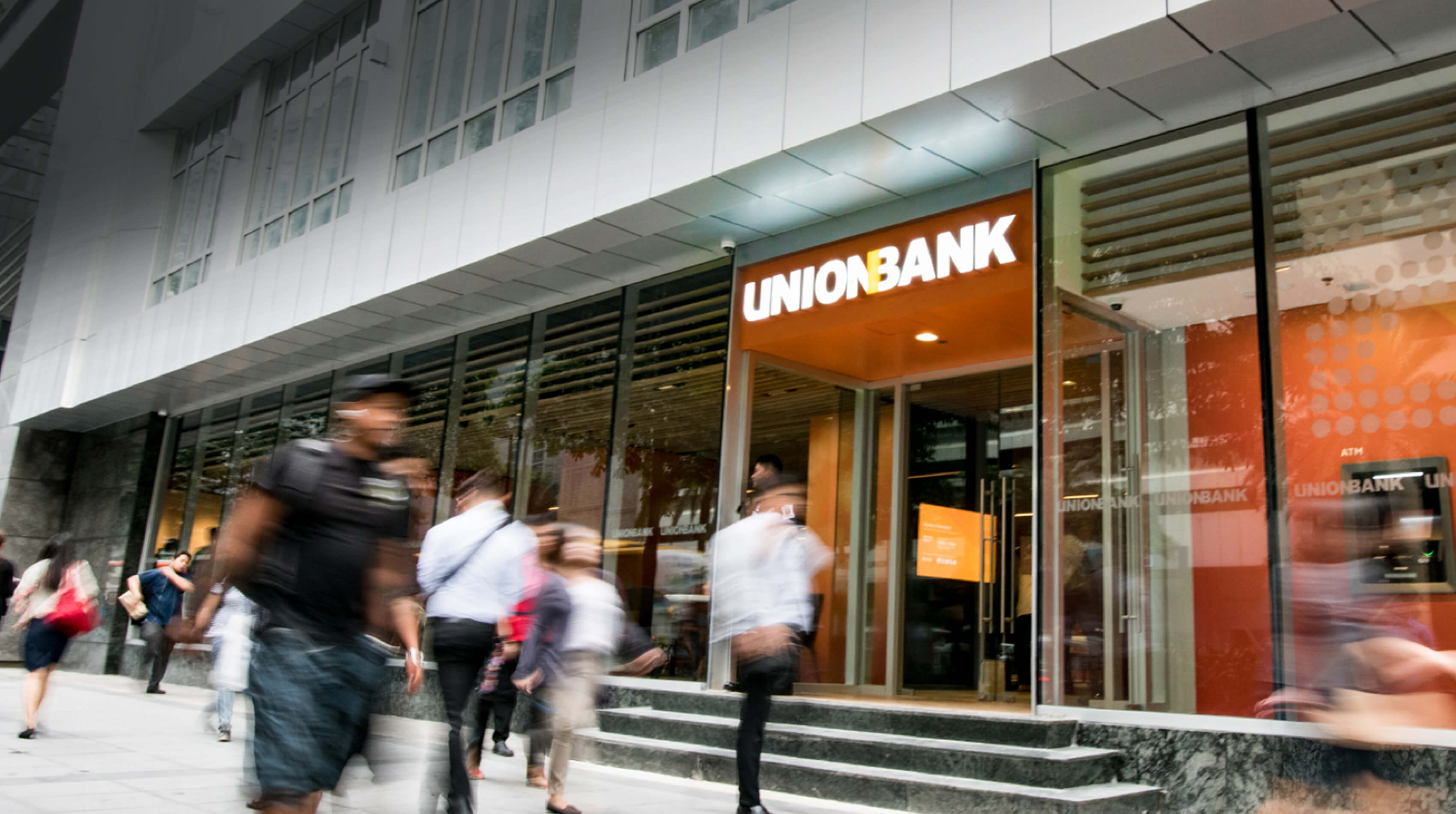
The Ark – an innovation lab on the high street. Bonsey Design was appointed to deliver the model for a next-generation banking destination. We started with a flagship centre in Manila known as The ARK. The concept was to design hi-tech, high-touch innovation lab to showcase UnionBank’s customer-centric innovation strategy.

Our research at the Design Thinking stage uncovered vital customer pain points.
The biggest challenge was the tedious queuing. And the frustration was amplified by having to line-up at multiple counters. The overall journey was inflexible and did not invite customers to engage beyond their transactional needs.

The Human Experience: We developed the Ark Ambassador Persona to reimagine the modern banker. The Ark Ambassadors are warm, well trained and always show up at the right time. The customer no longer needs to ricochet from one desk to the next.

The Physical Experience: We created an inviting environment in which customers would be relaxed and receptive. Space engages the visitors at a multi-sensory level. The modular design of the main banking floor allows new functionality like speaking events, cocktails and hackathons
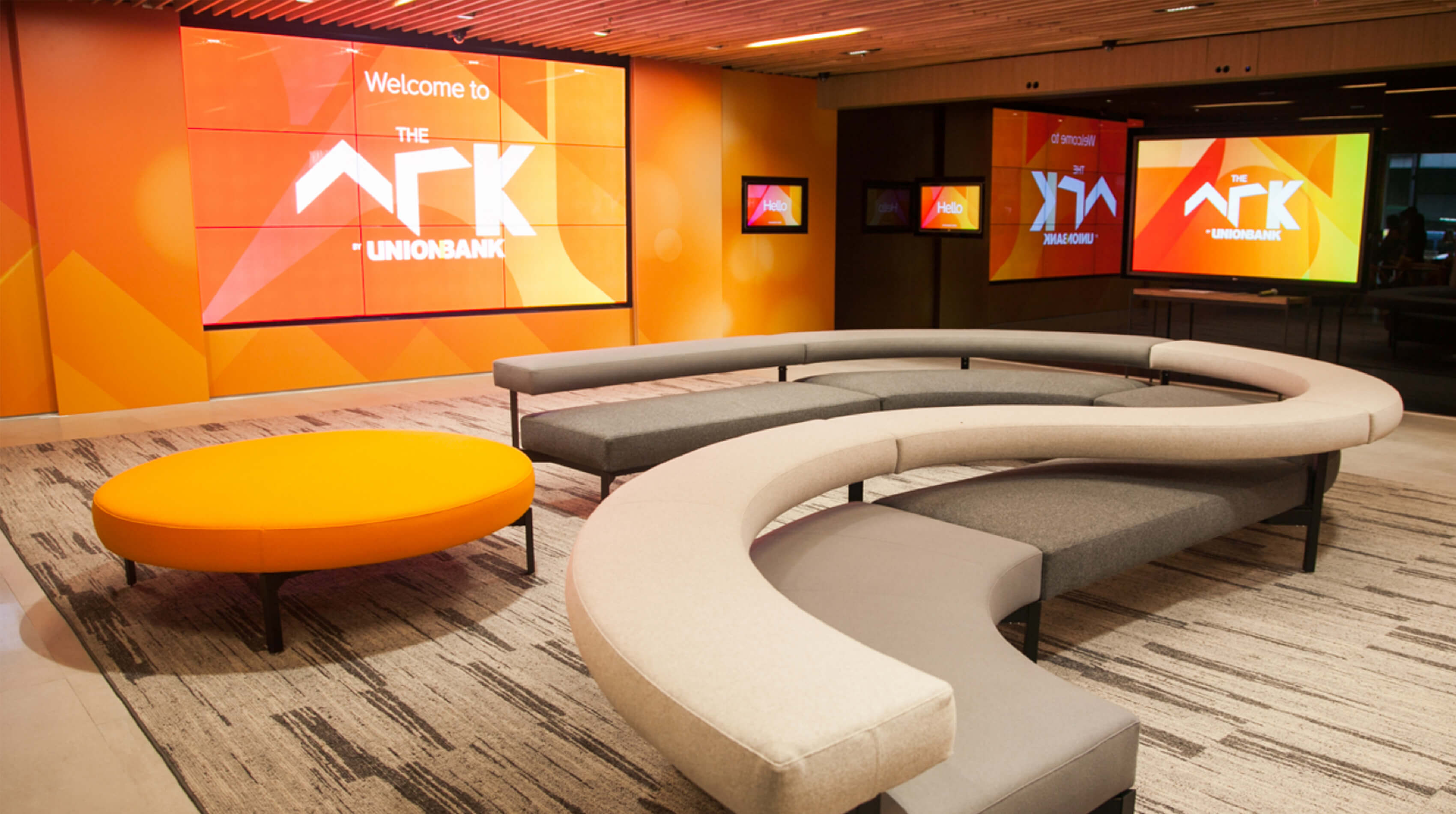
The Digital Experience: A customer arriving at The ARK would simply need to pick up a tablet to conduct their banking transactions or explore new products. Intuitively responding to the customer’s needs, the ARK Ambassadors would facilitate the digital banking process.

For those customers unfamiliar with digital banking, we modelled the UI and UX to emulate social media and familiar digital touchpoints. We also developed specialised video, VR and AR content to facilitate customer education and enriched baking experiences.

Within six months, The ARK saw a six-fold increase in account openings, with an average 20% reduction in transaction times.
Sales for new products has increased, and the dependency on traditional banking processes has decreased. Customers now prefer self-service machines.
Over 70 different events were held here within the first year of operation, bringing together The Ark community.
We are now applying the model and its learnings across the remaining 195 bank branches. Bonsey Design is managing the roll-out with the client teams.
Our effort was further validated by the ARK winning numerous awards including:
– Most Innovative Digital Branch Project – The Asset Triple A Digital Awards 2018 (HongKong)
– Top 14 Most Stunning Bank Branch Designs in the World
– Retail Banker International: Winner of the Best Branch Customer Experience in the Asia Pacific (Singapore) 2018
– International Data Corporation (IDC) Philippines: Digital Transformer of the Year 2018
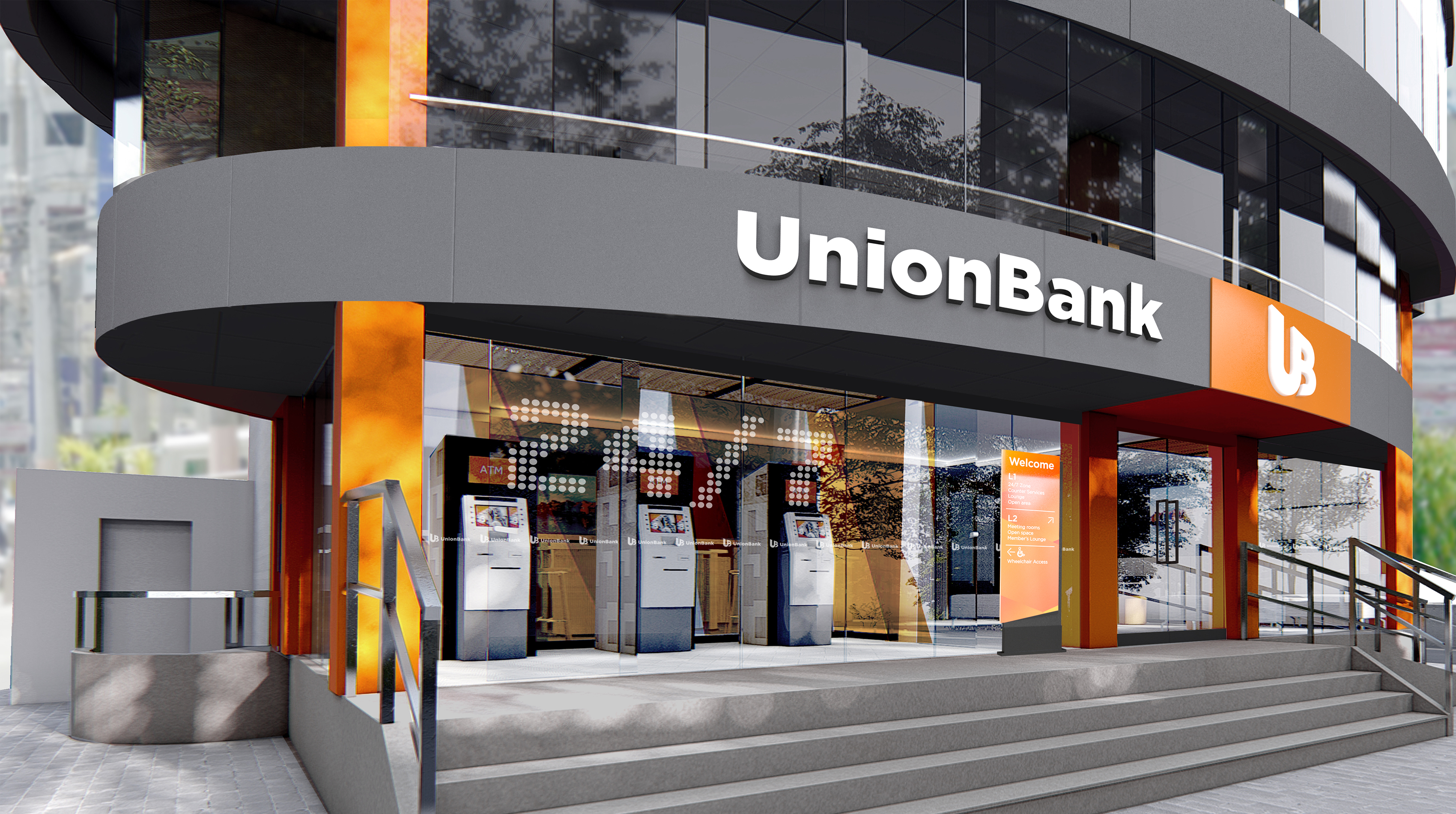
- brand & digital strategy
- brand naming
- brand identity
- project management
- in the news
- Case studies
- Our services
- News & views
- sustainability
FINANCIAL BRANDING CASE STUDIES | DIGITAL FINANCE CASE STUDIES
Explore our digital brand case studies with examples in financial services, with branding, rebranding and digital case studies across wealth management, private banking, retail banking, investment banking and fintech.
As a leading digital brand agency, our case studies span brand strategy, brand naming, rebranding and digital transformation, including branding for start-ups, repositioning heritage banks, brand identity design, and frictionless user experience design for online banking websites and apps.

Re-naming a global financial brand in 72 hours
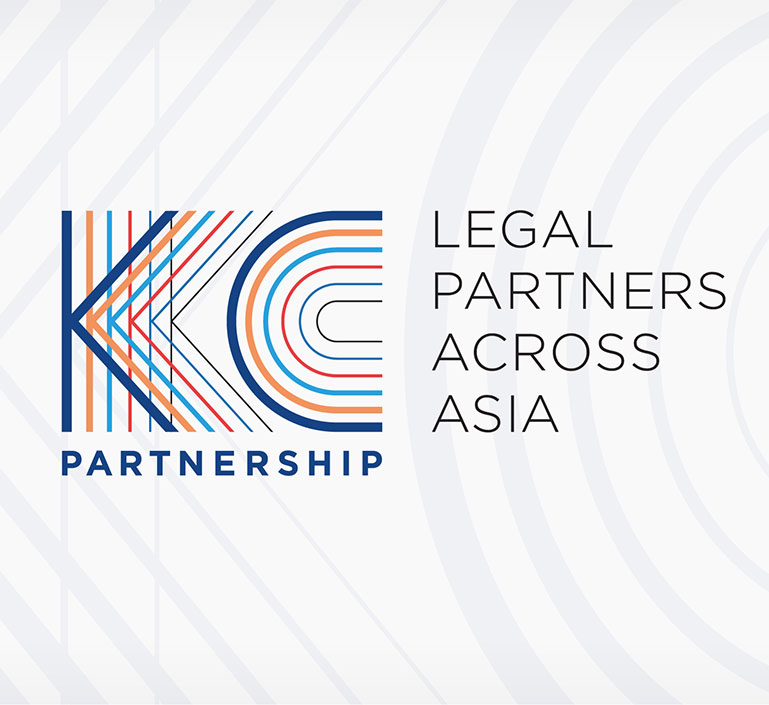
brand + digital
Kelvin chia.
Rebranding - Legal pioneers across Asia

brand + digital + ip
The bank that helps you revive your finances
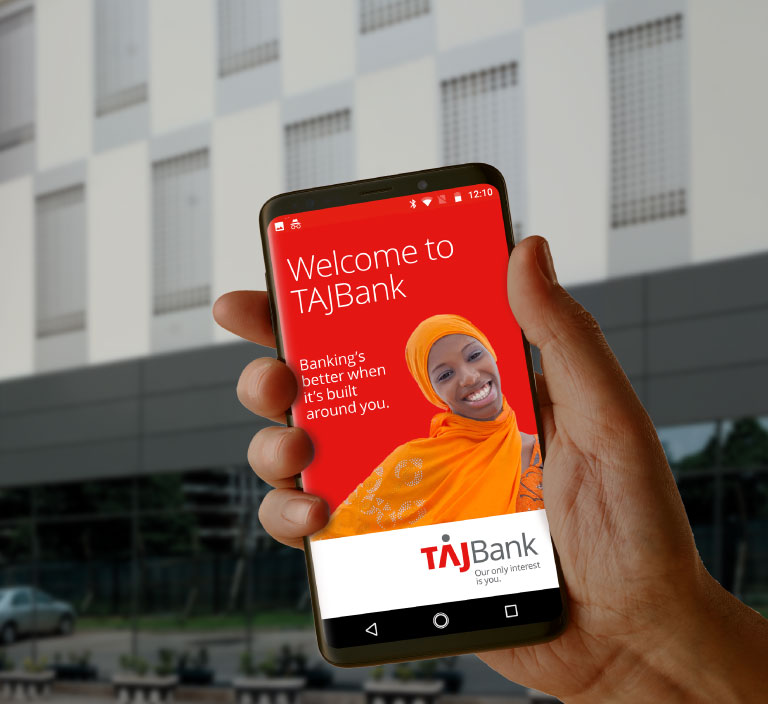
A digital bank built around customer needs
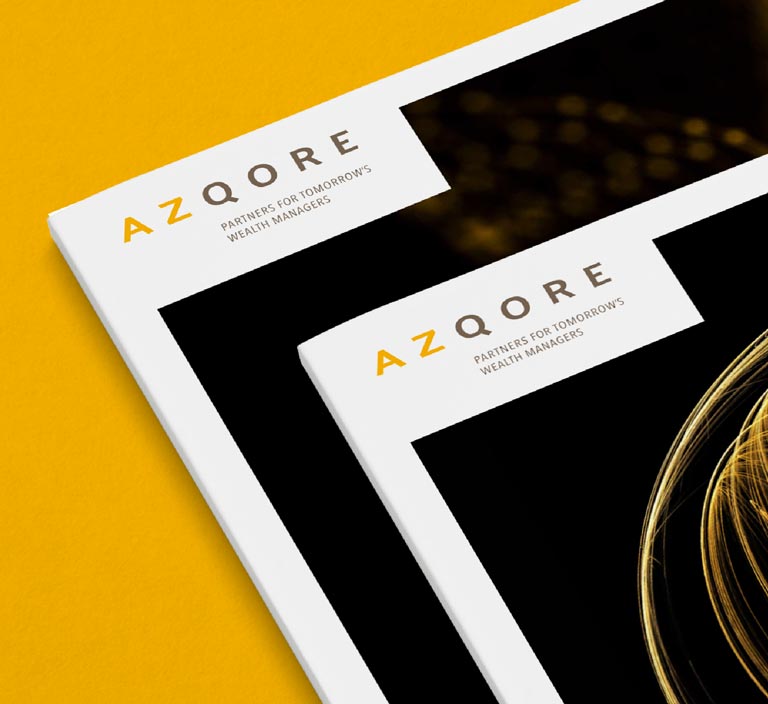
The new name in wealth management technology
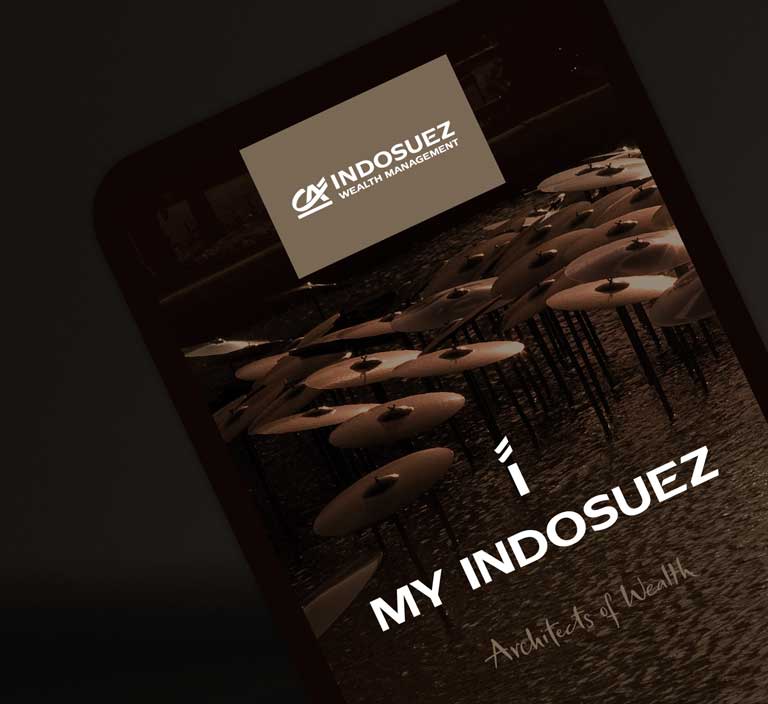
My Indosuez
An app to manage your wealth
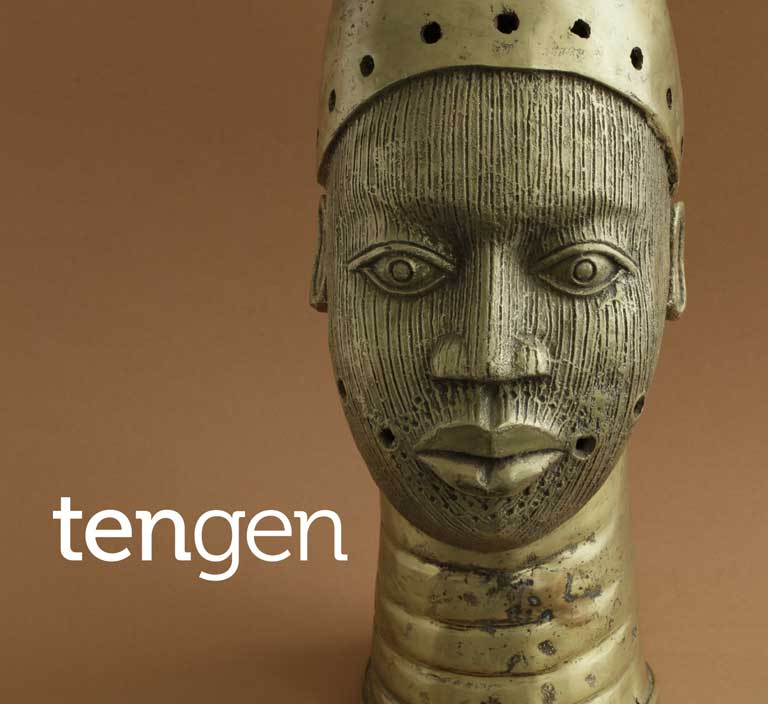
Branding a family office in Nigeria
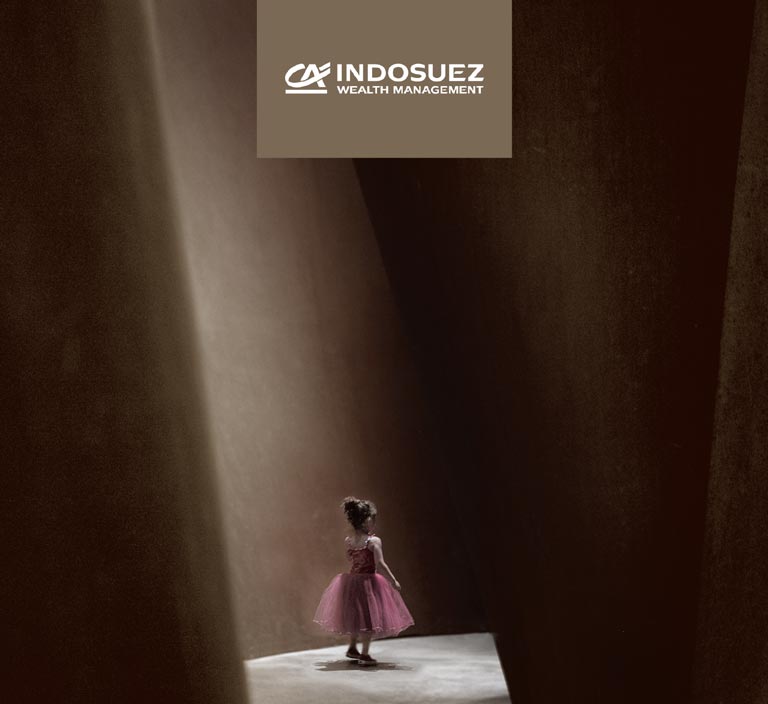
Indosuez Wealth Management
A worldwide wealth management brand
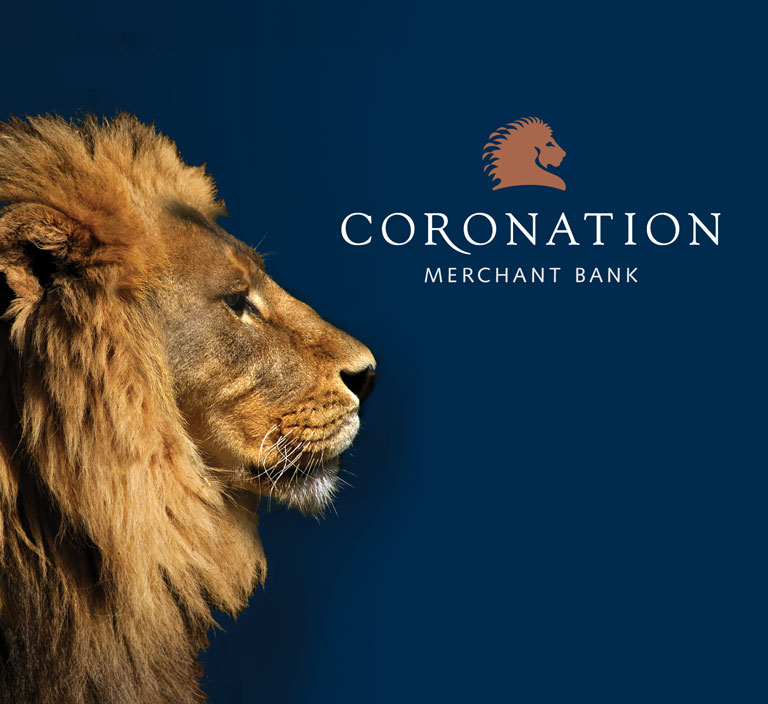
Coronation Merchant Bank
A new force in African banking
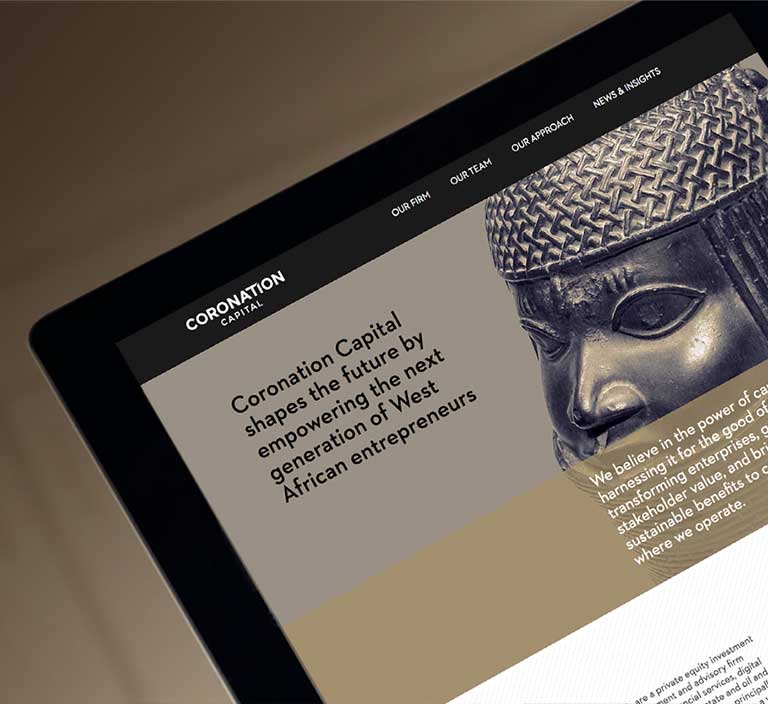
Coronation Capital
Brand proposition for a private equity firm
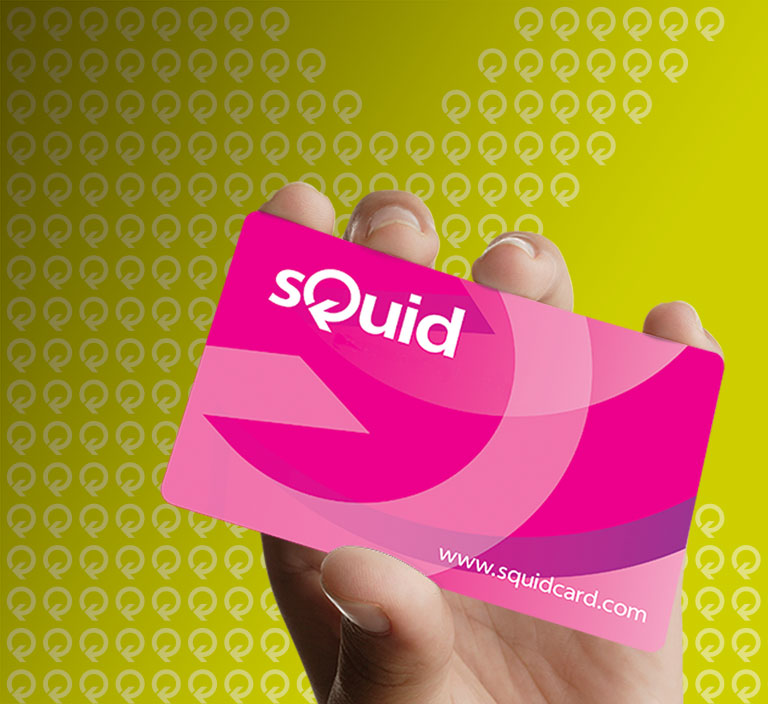
Growing digital communities through payments
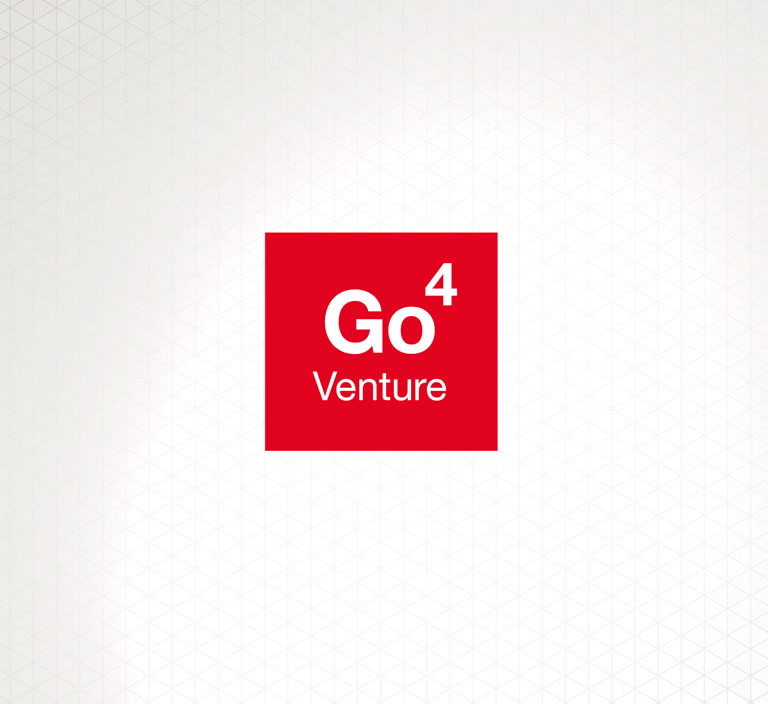
Branding a fintech information marketplace
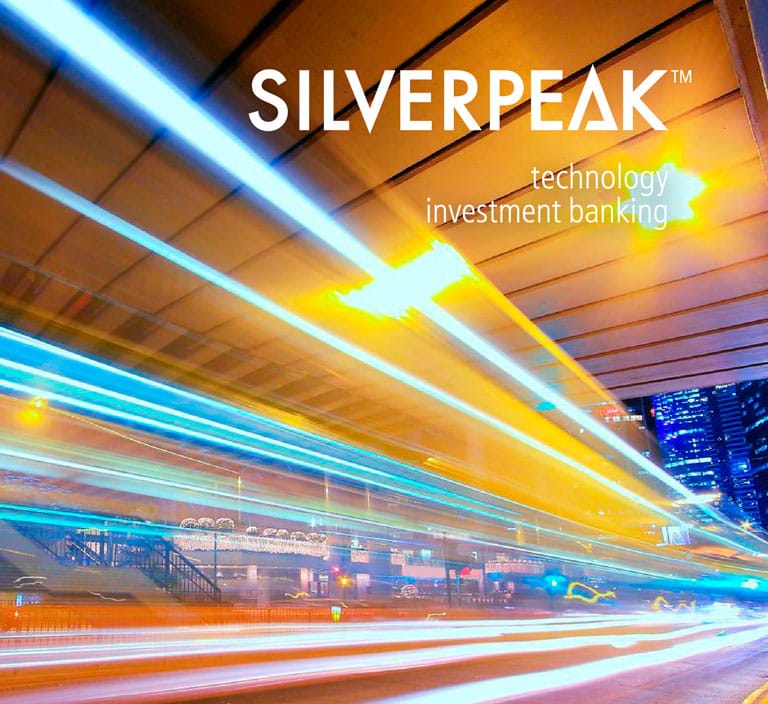
A new name in technology investment banking
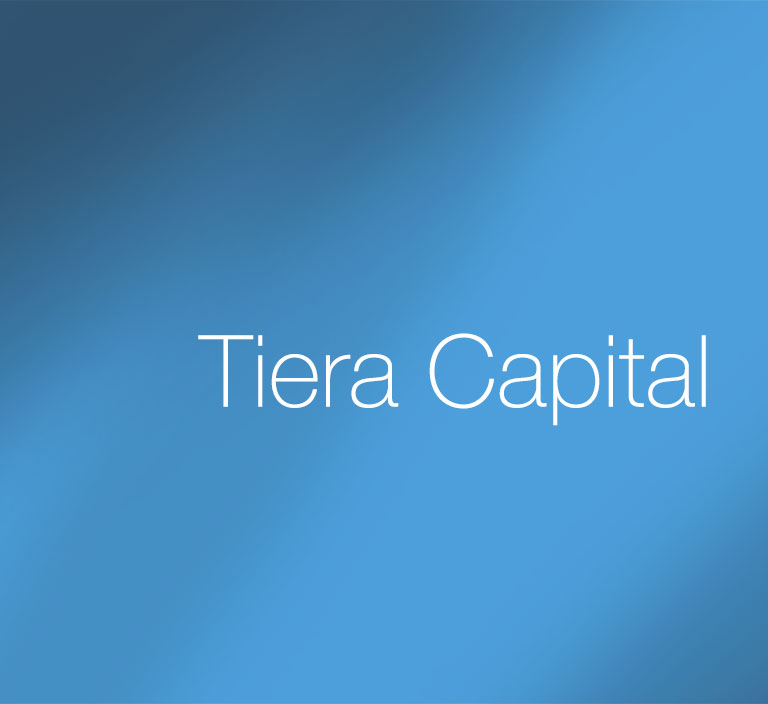
Tiera Capital
Naming a private equity investment product
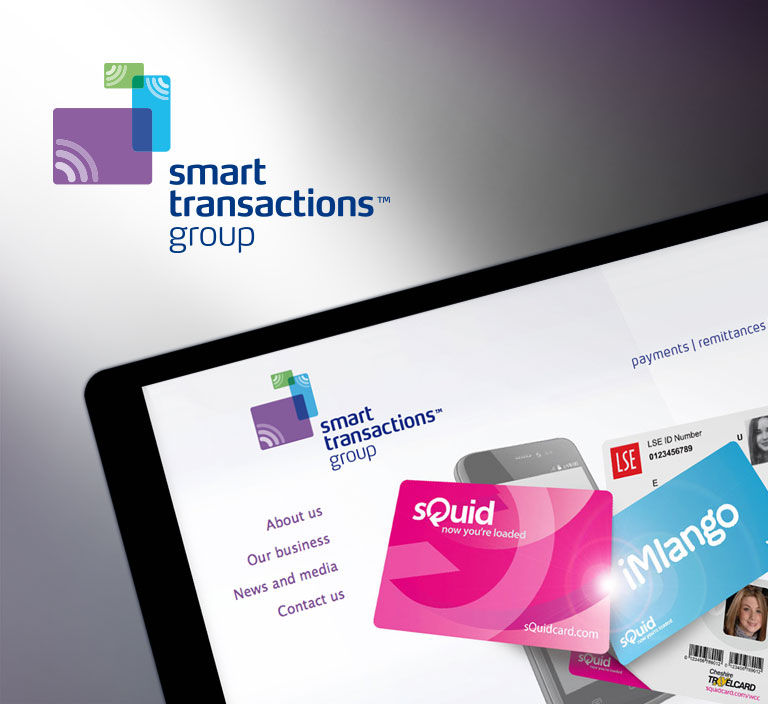
Smart Transactions Group
Branding the UK’s leading smart payments group
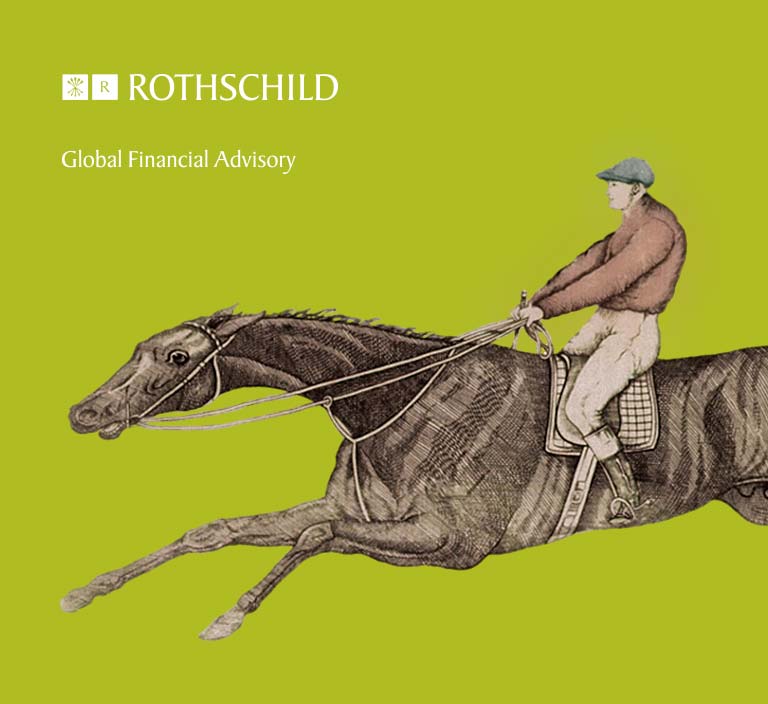
Rothschild Global Financial Advisory
Redefining global investment banking
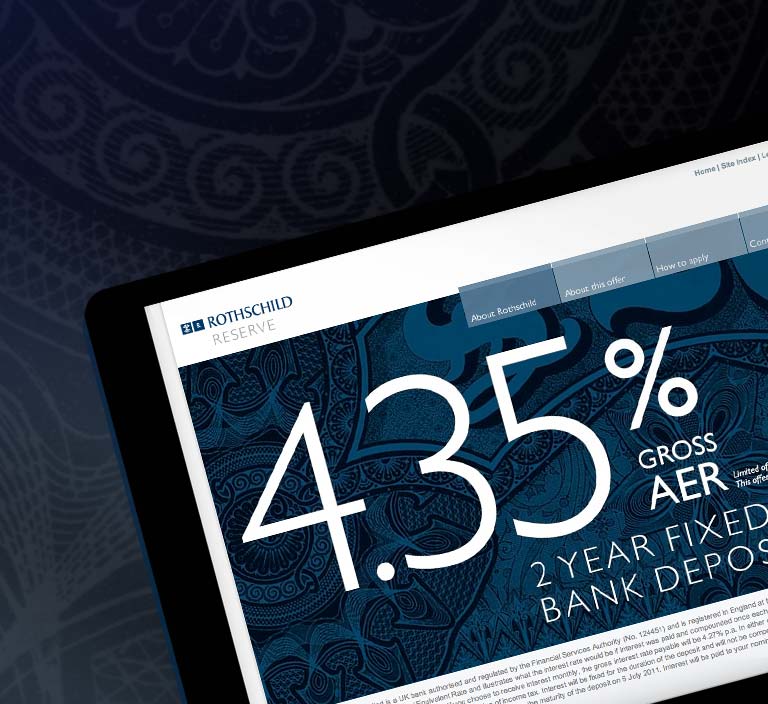
Rothschild Reserve
Harnessing the magic of Rothschild for consumers
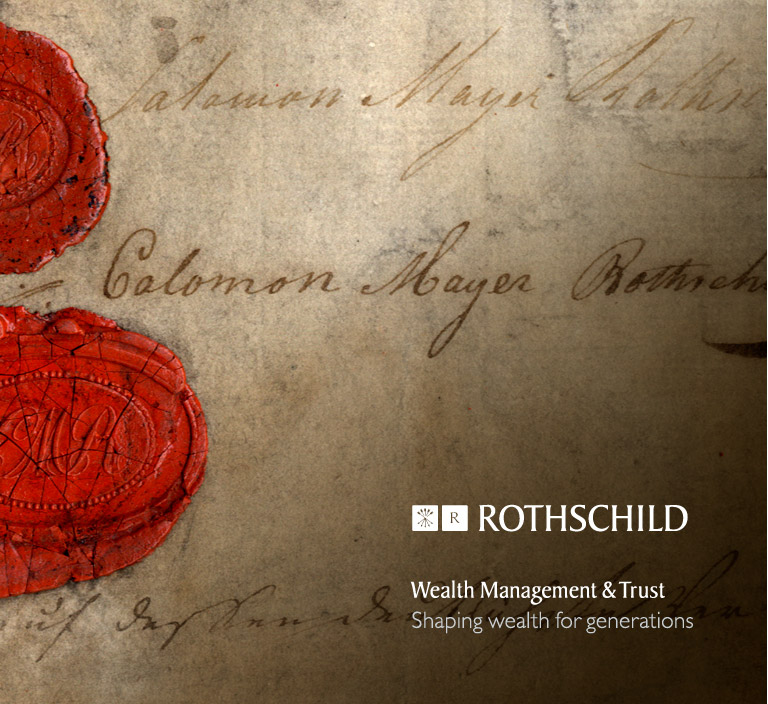
Rothschild Wealth Management & Trust
Seven illustrious generations distilled
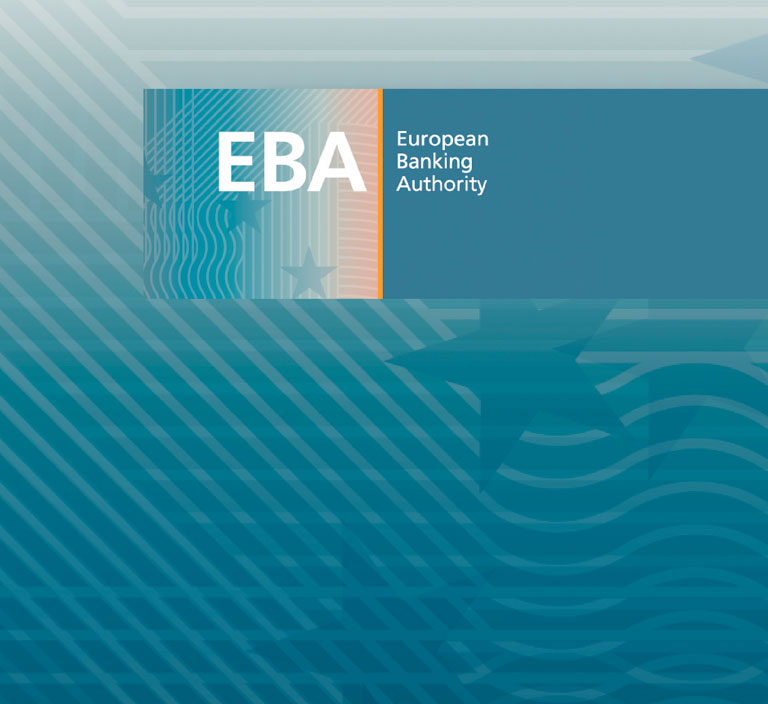
European Banking Authority
Advising a European Commission initiative
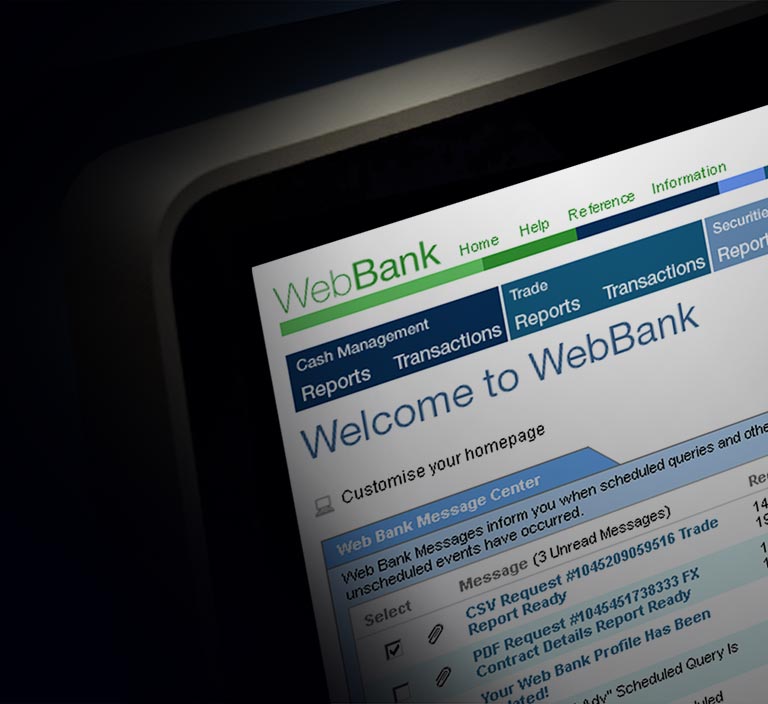
Standard Chartered
Usability research for B2B banking online
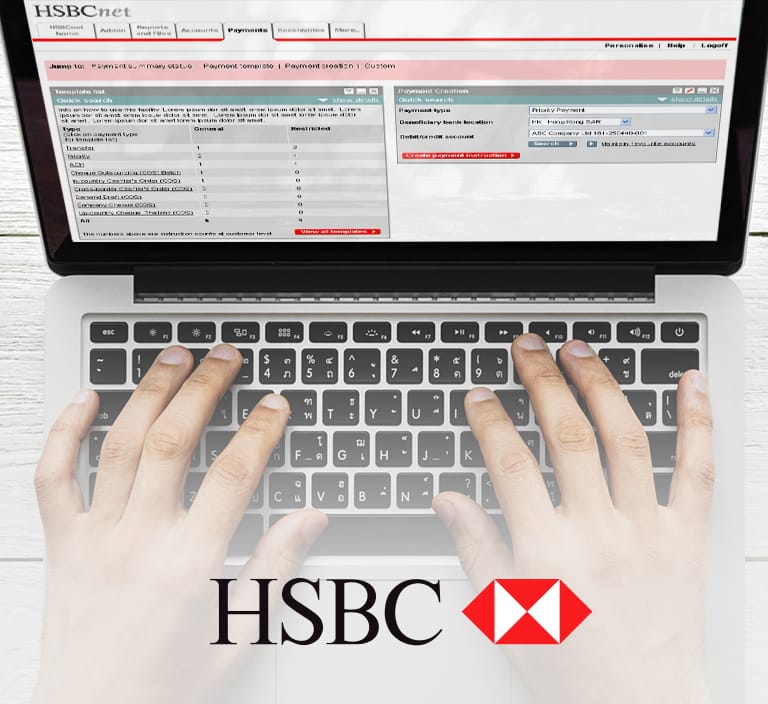
Global usability research for online banking

NatWest Markets
Branding a global investment bank
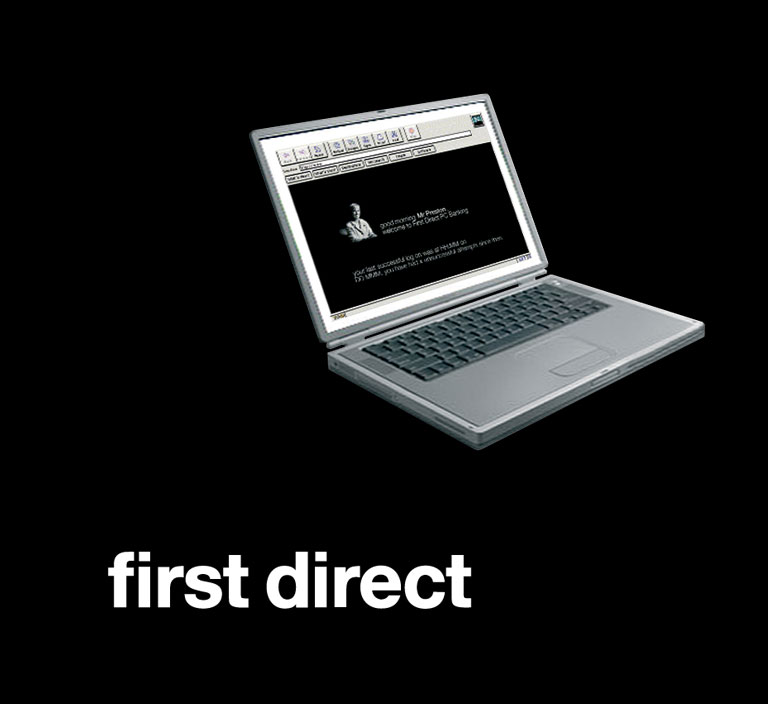
First Direct
A pioneering example of online banking
INTEGRATED BRAND EXPERIENCES FOR DIGITAL BANKS
Our brand and digital case studies illustrate examples of our work for retail banks, online banks, wealth managers, investment banks and fintechs, with examples in the UK, Europe, Nigeria and international financial institutions.
As a digital brand agency with deep experience in financial services we combine specialist brand and digital skillsets to create immersive brand experiences for financial brands across all media, including UX design of account opening processes, online banking services and banking apps.
We have worked with some of the world's leading banking software provider to design banking solutions, as well as fintech start-ups with their own technology.
Read more about our digital brand agency services .
This website uses cookies to provide you with the best user experience. By using our website, you consent to our use of cookies in accordance with our cookie policy .
Case Study 7: The Digital Transformation of Banking—An Industry Changing Beyond Recognition
- First Online: 06 February 2020
Cite this chapter

- Hubert Tardieu 6 ,
- David Daly 7 ,
- José Esteban-Lauzán 8 ,
- John Hall 9 &
- George Miller 10
Part of the book series: Future of Business and Finance ((FBF))
1900 Accesses
1 Citations
Partly as a result of the rise of FinTechs, banking is a sector that is facing significant disruption. In this case study, we identify some of the innovations that are being made both by young start-ups and long-established banks. We explore emerging opportunities in terms of business models, as well as how new operating models will boost customer-centricity and optimize costs through intelligent automation. The challenges of strategy, leadership, and attracting and retaining digital talent are analyzed. Finally, we conclude with a discussion of how platforms will enable new ecosystems of partners to work together to create and capture customer value.
This is a preview of subscription content, log in via an institution to check access.
Access this chapter
- Available as PDF
- Read on any device
- Instant download
- Own it forever
- Available as EPUB and PDF
- Compact, lightweight edition
- Dispatched in 3 to 5 business days
- Free shipping worldwide - see info
- Durable hardcover edition
Tax calculation will be finalised at checkout
Purchases are for personal use only
Institutional subscriptions
Accenture. (2018). Beyond north Star gazing . https://www.accenture.com/_acnmedia/pdf-85/accenture-banking-beyond-north-star-gazing.pdf . Accessed October 26, 2019.
Bain. New bank strategies require new operating models . https://www.bain.com/contentassets/a97b9014afc84a76ae9fb723d3e94ead/bain_brief_new_bank_strategies_require_new_operating_models.pdf . Accessed October 26, 2019.
The Financial Brand. Is the banking industry prepared for a world without bankers ? https://thefinancialbrand.com/86253/banking-future-of-work-training-digital-trends/ . Accessed October 26, 2019.
Capgemini. (2017, October). The digital talent gap . https://www.capgemini.com/wp-content/uploads/2017/10/report_the-digital-talent-gap_final.pdf . Accessed October 26, 2019.
Efma. (2018, September). World retail banking report 2018 . https://www.efma.com/study/detail/28603 . Accessed October 26, 2019.
EY. (2018, June). How convergence in banking could be an opportunity for growth . https://consulting.ey.com/convergence-banking-opportunity-growth/ . Accessed October 26, 2019.
EY. (2016). Global consumer banking survey . https://eyfinancialservicesthoughtgallery.ie/wp-content/uploads/2016/10/ey-the-relevance-challenge-2016.pdf . Accessed October 26, 2019.
IDC. (2018, March). The business value of the stripe payments platform . https://stripe.com/files/payments/IDC_Business_Value_of_Stripe_Platform_Full%20Study.pdf
KPMG. (2019, July). The future of digital banking: Banking in 2030. https://home.kpmg/au/en/home/insights/2019/07/future-of-digital-banking-in-2030.html . Accessed October 26, 2019.
McKinsey. (2018, August). The lending revolution: How digital credit is changing banks from the inside . https://www.mckinsey.com/business-functions/risk/our-insights/the-lending-revolution-how-digital-credit-is-changing-banks-from-the-inside . Accessed October 26, 2019.
OnDeck. (2019). https://www.ondeck.com/home5-lendstart . Accessed October 26, 2019.
Quartz. (2019, August). Digital banks are racking up users, but will they ever make money ? https://qz.com/1679197/when-will-digital-banks-like-n26-and-revolut-start-making-money/ . Accessed october 26, 2019.
Download references
Author information
Authors and affiliations.
Paris, France
Hubert Tardieu
Nottingham, Nottinghamshire, UK
Madrid, Spain
José Esteban-Lauzán
Warrington, Cheshire, UK
West Wittering, West Sussex, UK
George Miller
You can also search for this author in PubMed Google Scholar
Corresponding author
Correspondence to Hubert Tardieu .
Rights and permissions
Reprints and permissions
Copyright information
© 2020 Springer Nature Switzerland AG
About this chapter
Tardieu, H., Daly, D., Esteban-Lauzán, J., Hall, J., Miller, G. (2020). Case Study 7: The Digital Transformation of Banking—An Industry Changing Beyond Recognition. In: Deliberately Digital. Future of Business and Finance. Springer, Cham. https://doi.org/10.1007/978-3-030-37955-1_28
Download citation
DOI : https://doi.org/10.1007/978-3-030-37955-1_28
Published : 06 February 2020
Publisher Name : Springer, Cham
Print ISBN : 978-3-030-37954-4
Online ISBN : 978-3-030-37955-1
eBook Packages : Business and Management Business and Management (R0)
Share this chapter
Anyone you share the following link with will be able to read this content:
Sorry, a shareable link is not currently available for this article.
Provided by the Springer Nature SharedIt content-sharing initiative
- Publish with us
Policies and ethics
- Find a journal
- Track your research
The Midas touch of branding: banks' brand value, intellectual capital and the optimization of the Interbrand methodology
Journal of Intellectual Capital
ISSN : 1469-1930
Article publication date: 15 February 2021
Issue publication date: 17 December 2021
The aim of this paper is to show how a bank's brand value is quantitatively assessed using the Interbrand methodology, taking into account the specifics of the banking market. Therefore, the objective of this paper is to review the ways in which brands contribute to the higher market value of banks by strengthening intellectual capital (IC), as reflected in increased levels of competitiveness and the reputation that the bank maintains in the minds of customers.
Design/methodology/approach
This paper applies the Interbrand methodology, which indicates that the assessment of brand value implies the determination of economic profit as the difference between the net operating profit after tax and the cost of capital. The brand profit is then calculated as the product of the economic profit and the index of the brand role. Brand value is obtained as the product of the brand's profit and the discount rate of the brand. In order to further test the results obtained through the application of the Interbrand methodology, linear regression was applied to the panel data in order to provide more efficient econometric estimates of the model parameters.
This research has shown that the Interbrand methodology's empirical foundations lie in the Montenegrin banking market, but also that, out of all of the analyzed parameters, the greatest significance is obtained from the profit of the brand, which influences the value of bank brands.
Research limitations/implications
This research is related to the service sector–in this case, financial services – meaning that it is necessary to adjust the calculation of the weighted average cost of capital. Although the banking sector is a very competitive market, a limitation exists in the fact that the research was conducted only in Montenegro. In other words, in order to achieve a more detailed analysis, this methodology should be applied to more countries, such as those within the Western Balkans, as they have a relatively similar level of development.
Practical implications
A main contribution of this paper is that the assessment of the banks' brand value could be useful to future investors. Therefore, the improvement of the financial sector–in this case, banks–as institutions that hold a dominant position in the financial market in Montenegro, is a particularly important issue. It is important to point out that the research conducted could serve as a means by which to bridge the gap between theory and practice, since the methodology of the consulting company Interbrand has been optimized and adjusted to the Montenegrin banking market.
Social implications
On considering the fact that most countries of the Western Balkans are at a similar level of development, the authors can conclude that, with the help of this adapted form of methodology, this research can be applied to assess banks' brand value in neighboring countries.
Originality/value
This paper serves as the basis for further research as the analysis of banking institutions that comprise both marketing and financial aspects, i.e. the application of the Interbrand methodology, was not conducted in Montenegro. Also, this paper overcomes the literal gap between theory and practice as there is little research thus far involving the application of the Interbrand methodology to the field of finance; especially in the field of banking. The authors point out the specifics of the banking sector as a key explanation for this. This is why it is necessary to make certain adjustments to the methodology. The research has positive implications for banks' internal and external stakeholders. The originality of this research is reflected in the fact that the Interbrand methodology has been optimized in order to assess the brand of banks, taking into account the specificity of the analyzed market. Brand is analyzed as a component of IC: another factor that exemplifies the value of this research.
- Intangible assets
- Intellectual capital
Melović, B. , Vukčević, M. and Dabić, M. (2021), "The Midas touch of branding: banks' brand value, intellectual capital and the optimization of the Interbrand methodology", Journal of Intellectual Capital , Vol. 22 No. 7, pp. 92-120. https://doi.org/10.1108/JIC-08-2020-0272
Emerald Publishing Limited
Copyright © 2021, Boban Melović, Milica Vukčević and Marina Dabić
Published by Emerald Publishing Limited. This article is published under the Creative Commons Attribution (CC BY 4.0) licence. Anyone may reproduce, distribute, translate and create derivative works of this article (for both commercial and non-commercial purposes), subject to full attribution to the original publication and authors. The full terms of this licence may be seen at http://creativecommons.org/licences/by/4.0/legalcode
1. Introduction
Due to the competitive nature of the market, company management teams strive to build strong brands in order to differentiate themselves, for which more detailed marketing research is necessary. Brand creation, as a segment of intangible assets, i.e. intellectual capital (IC), is important and thus requires special attention. Brand is a key factor in enabling the achievement of long-term competitive advantages for a company ( Ratnatunga and Ewing, 2009 ; Agus Harjoto and Salas, 2017 ; Bharadwaj et al. , 2020 ).
Building a competitive brand within a market, however, requires assessment in order to obtain a clear picture of how a well-built brand contributes to the positive business results of the company ( Möller, 2006 ; Otubanjo, 2018 ; Wang et al. , 2018 ). Brands also play on psychological aspects or symbolic structures in users' minds on the basis of which future expectations about their operation will be generated. This is difficult to measure and capture objectively ( Feiz and Moradi, 2019 ; Khamitov et al. , 2020 ). We can define brand value as the incremental utility or added value to the product by brand name ( Rubio, 2016 ). It should be noted that conducting research on a brand as an intangible asset is demanding, especially when it comes to assessing its value. This is because intangible assets increase in importance as, and for most brands, their value does not lie in tangible, material assets, but rather in intangible ones. This has been confirmed by Cravens and Guilding (2000) and Popovic et al. (2015) , who show that the brand, as an intangible asset, represents a major part of the total corporate value of successful companies. Thus, questions pertaining to the significance and assessment of such assets are becoming increasingly prevalent – another motivation for this research. The demanding element of assessing the value of a brand not only arises from its intangible nature, but the fact that it is also based on determining future trends and prospects for the development of a particular brand. The research questions are: Can the Interbrand methodology find an empirical basis for assessing the brand value of banks? and Which of the parameters of the Interbrand methodology have the greatest significance when it comes to the value of a bank ' s brand?
The objective of this paper is to quantitatively present the ways in which the value of a bank's brand can be measured by applying the Interbrand methodology, thus assisting clients in obtaining a clearer picture of a particular bank, while simultaneously helping management to create strategies that allow them to achieve a greater market share.
The Interbrand methodology is used by the British marketing agency of the same name – Interbrand. The method is based on the observation of the entire continuous flow of investment in the brand and the process of managing it as an intangible asset ( Interbrand methodology, 2019 ). This methodology is grounded in the understanding that the core value of a brand is its economic value, i.e. the net present value (discounted) of future profits made exclusively by the brand. This is the methodology that first complied with the monetary requirements of ISO 10668 in 2010 ( Janoskova and Krizanova, 2017 ). Unlike other methods of assessing brand value, the Interbrand methodology covers both financial and marketing elements of brand evaluation, providing clearer insights into the brand-bank relationship. This served as another motivation for the application of this methodology. Alongside the Interbrand methodology, there are other methods with which to assess brand value, such as Aaker's Brand Equity Ten, the Brand Finance Method, BAV (Brand Asset Valuator method), and more, depending on the approach chosen. These methods, however, do not emphasize both aspects of brand valuation observation. It is also difficult to apply them to large numbers of markets due to the specifics of financial reporting and unadjusted financial statements. This also applies to the market analyzed in this study. Another objective of this study was to show that the Interbrand methodology, in addition to its standard application for ranking the most valuable brands in the world in the fields of production, trade, services, technology and telecommunications, can be applied to the banking sector and financial services.
The complexity of the assessment process is also contributed to by the fact that the measurement of brand value is carried out in the service sector; in this case the financial service sector, which is one of the factors that makes this paper original. In particular, an assessment of the banks' brand value in the Montenegrin market was conducted using the Interbrand methodology. According to the Interbrand methodology, the brand valuation process is based on three steps. The first step is the determination of economic profit, the second step is the calculation of brand profit, and the third step is brand evaluation. An additional objective of this paper is to show that the Interbrand methodology can be applied to the banking sector and financial services sector alongside its standard application, in which it ranks the most valuable brands in the world in technology and telecommunications, manufacturing and trades or services. This research will show the ways in which banks can be ranked from a marketing perspective through the assessment of the brand value of banks using the Interbrand methodology.
There are not enough researchers involved the application of the Interbrand methodology in the field of finance; particularly in banking. The authors have concluded that the specifics of the banking sector are a key reason for this and that this is why it is necessary to make certain adjustments to the methodology. In Montenegro, the value of brand banks has not been assessed using any method, serving as a further motivation. Specifically, the authors sought to assess the brand value of banks doing business in Montenegro while testing the Interbrand methodology, which is used today as a reference point on a global level. The competitiveness of commercial banks–fifteen in Montenegro–is of great importance to this analysis. This is a large number when we consider the fact that Montenegro is a relatively small market. Competition between banks develops the need for managers to discover how loyal their customers are and, in this way, determine how much their bank, as a kind of brand, contributes to that loyalty.
This paper seeks to observe brand through the context of IC, adding further value to this study. This is because the brand represents a significant item of IC. The brand is associated with IC through its analysis as an element of IC. Therefore, the brand belongs to the relational component of IC ( Roos et al. , 2001 ; Seetharaman et al. , 2004 ). Hence, the brand and elements of brand identity have a significant impact on the strengthening of the IC of the company ( Seetharaman et al. , 2004 ). It is therefore not surprising that research on brand as an intangible asset–and thus an element of IC –is an increasingly prominent topic in modern business. This paper seeks to shed new light on IC in transition countries by outlining the assessment of its important relational component, thus offering clearer insights into complex methods for assessing IC as a whole. The banking sector is ideal when applying research on the development of IC because it is primarily based on knowledge, as demonstrated by Tran and Vo (2018) . In order to provide the best service to their clients, banks must invest in human resources, brands, systems and knowledge processes ( Tran and Vo, 2018 ). In addition to the work of the aforementioned authors, the importance of IC for competitive business has been confirmed by previous studies too ( El–Bannany, 2008 ; Goh, 2005 ; Mavridis, 2004 ; Muhammad and Ismail, 2009 ; Kamath, 2007 ). These researchers have analyzed IC using the example of financial institutions, i.e. banks. In accordance with previous research, we conducted an analysis of brand valuation as a component of IC in the Montenegrin banking market in order to see how much a bank, as a brand, contributes to successful business. This paper provides a summary of existing scholarship on the elements of IC; the adequate assessment of which strengthens the market position of banks in Montenegro and in other countries, as characterized by a high concentration of banks in the financial market. In this way, the importance and role of IC in creating additional corporate value in banks is further emphasized in an attempt to build sustainable strengths to further the bank's competitive position in the market. The paper consists of six parts. The introduction highlights the role and importance of the brand and its assessment when it comes to modern ways of conducting business. The second part provides a review of previous research in this area and outlines the specifics of the application of the Interbrand methodology in the field of financial services, i.e. in banks as financial institutions. The third part shows the Interbrand methodology and the results of the application. The discussion of the results is shown in the fourth section. The fifth part provides the conclusions and implications of the paper and the sixth part presents the limitations of the research and gives the authors' recommendations for future researchers.
2. Literature review
2.1 theoretical framework for intellectual capital assessment – brand relationships.
A number of previous researchers have pointed out that, decades ago, well-developed companies did not base their competitiveness on tangible assets, but on intangible ones, focusing on the development of IC as a type of intangible asset ( Teece, 1998 ; Loyarte et al. , 2018 ). IC is an important component of intangible assets and it can significantly contribute to the competitive advantage of a company and, thus, the growth of its market share ( Chen et al. , 2005 ; Mondal and Ghosh, 2012 ; Jurczak, 2008 ). This enhances and highlights the need to measure the performance of IC, which allows for comparisons to be drawn between other companies in the marketplace and facilitates the monitoring of developments and improvements over a certain period of observation ( Jurczak, 2008 ). There are three techniques with which to measure IC: balanced scorecard, intangible asset monitor and Scandia Value Scheme ( Seetharaman et al. , 2004 ). Unlike previous authors, Chan (2009) identifies five approaches for measuring IC: the Market Capitalization approach, the Direct IC Measurement approach, the Scorecard approach, the Economic Value-Added approach and the VAIC methodology. On the other hand, Fiano et al. (2020) , identifies four approaches to the valuation of IC: direct intellectual capital (DIC) methods, market capitalization methods (MCM), return on assets (ROA) methods and Scorecard methods (SC). Table 1 shows the most common methods used to measure and analyze IC and its components.
Based on this table, we can see that some of the methods used to measure the value of IC can be applied to brand valuation, such as the EVA method, the method based on the weighted average cost of capital and return on equity (ROE), which is not surprising given the fact that brand is a relational component of IC. The role and the importance of the brand can be observed through the lens of IC. IC includes knowledge, brand, patents, human capital, research and development. It is considered the main resource with which to generate economic growth and wealth ( Forte et al. , 2017 ). Moreover, investments in IC are important to companies that want to achieve increased productivity and efficiency and thus represent a key item with which to improve business processes ( Forte et al. , 2017 ). Intangible assets are a main source of wealth, prosperity, economic growth and innovation ( Loyarte et al. , 2018 ). The basic components of IC are: human, structural and relational (see Figure 1 ). The connection between the brand and IC can be observed. Brand and elements of brand identity represent important segments of IC. Therefore, the brand belongs to the relational component of IC in terms of reputation, strategic alliances, customers, licensing, agreements and distribution channels. All of these elements are interconnected and they form a whole that largely determines the competitiveness of companies operating in the market.
However, if we take into account that, in order to create a good and recognizable brand, it is necessary to have knowledge and skills; additional emphasis is placed on the connection between these two types of intangible assets. Specifically, the creation of a competitive brand implies adequate knowledge. This is even more important if we take into account the fact that contemporary knowledge is seen as the most important resource and factor by which companies differentiate themselves from others in the market ( Del Giudice and Maggioni, 2014 ). As shown in Figure 1 , knowledge is one of the essential elements of IC, as confirmed by the research of a number of scholars ( Seetharaman et al. , 2004 ; Goh, 2005 ; Taherparvar et al. , 2014 ). The role of knowledge, and thus the role of human capital, is particularly expressed in the service industry and especially in banks as financial institutions. The reason behind this is that service providers–in this case, bank employees and managers across all levels of the decision-making process–must have additional knowledge and skills in order to properly respond to the challenges of modern business. This was confirmed in a study on banks conducted in Portugal by Cabrita and Bontis (2008) , in which it was pointed out that human capital has a positive effect on the components of IC and, thus, on the brand as well. It can therefore be concluded that higher levels of knowledge and skills affect more competitive brands and that a recognizable brand strengthens IC as a whole ( Seetharaman et al. , 2004 ). This leads to the conclusion that investing in IC contributes to better company performance, which confirms the significant relationship between the performance of companies and IC, including its basic components ( Phusavat et al. , 2011 ; Salehi et al. , 2014 ). For further analysis of IC, and thus the brand as a relational component of this, it is important to understand the balancing of this type of intangible asset in financial statements. Therefore, Petty and Cuganesan (2005) demonstrate that the degree of presentation of IC in financial statements is still low, but this also depends on the size of the company and the branch to which the company belongs.
2.1.1 Theoretical framework for brand value assessment
Brand is one of the most important elements of IC. It is therefore not surprising that brand and brand valuation are increasing in importance, given the fact that IC is now recognized as an important element when strengthening the competitiveness of companies in the market ( Chen et al. , 2005 ; Seetharaman et al. , 2004 ). However, researching a brand is challenging, especially when it comes to assessing its value. The complexity of quantifying intangible assets does not arise only from their non-monetary nature, but also with regards to future flows and perspectives of the development of a certain brand. The extent to which the value of the brand and, therefore, its assessment, is important in modern business when improving business performance, which is demonstrated by this research and outlined in Table 2 .
As shown in the table, we can conclude that, in addition to the Interbrand methodology, other methods can be used to assess the value of the company brand, such as: Forbes, Brand Finance, Millward Brown and the Damodaran method, by using statistical methods to depict the relationship or influence of brand value on the financial and market performance of companies. Unlike the aforementioned methods, which are difficult to apply to some markets (as is the case in our research) due to specific financial reporting and the fact that financial and marketing aspects of brand valuation are not included, the Interbrand methodology can be applied. This is important both from a marketing and financial standpoint; especially considering the specificity of the banking market.
Additionally, it is the brand, as an intangible asset, which appears to be key to strategies differentiating and establishing relationships with consumers because, on the one hand, this is a means of distinguishing the company from competitors and, on the other hand, this is the basis of trust and close relationships with consumers ( Ball et al. , 2004 ; Čavalić, 2013 ).
However, it is very difficult to identify a brand and present it in financial statements ( Nimtrakoon, 2015 ). International Valuation Standards Council, ( International Valuation Standards Council IVS, 2010 ), enforce a precise hierarchy in the valuation criteria: market and income methodology. The most recognized business consulting agencies follow this hierarchy. Thus, the need to determine the value of the brand is an important factor when creating and preserving the overall value of the company, alongside the need to establish a better methodology for evaluating the company as a whole ( Rubio et al. , 2016 ). At the end of the 1980s, the brand was classified as an intangible asset in financial statements. This problem is recognized in the context of the need to evaluate the brand as a category that plays a major role in creating the overall value of the company ( Cottan-Nir, 2019 ).
Based on previous research, it has been acknowledged that, in marketing theory, the basic methodologies for brand evaluation can be classified into one of two basic groups. These authors point out that the first group consists of methodologies for determining brand value based on research results on consumer behavior and attitudes, and methodologies based on financial results or the financial performance of the brand which, in a classical sense, equates with the brand's financial value. The second group of methodologies relates to the tendency to assess the (financial) value of a brand as an intangible asset ( Damodaran, 2012 ).
There are four approaches to brand valuation: cost, market, production and formulary ( Cravens and Guilding, 1999 ; Seetharaman et al. , 2001 ). All of these approaches contain methods by which brand value can be assessed. However, as these are comprised of multiple evaluation criteria, the formal approach and the Interbrand methodology belonging to this approach are of particular interest. The formal approach is suitable for internal managerial evaluation purposes, but also when reporting to external users ( Brlečić, Valčić and Hodžić, 2016 ). These authors also point out that the methodology of this approach focuses on profitability determination.
The brand evaluation methodology, Interbrand, was the first to meet the international standard for monetary requirements, see ISO 10668 in 2010 ( Duguleana and Duguleana, 2014 ). This methodology is becoming increasingly important as it is based on observing the continuous flow of investment in the brand and its management of intangible assets ( Krstić and Popović, 2011 ).
The Interbrand methodology assumes that the greatest value of a brand is its economic value, representing the net present value of discounted profits, which are obtained exclusively from the brand, and it complicates the process of implementing this methodology. That is, according to the Interbrand methodology, determining the value of the brand involves three phases in which economic profit is determined first, then the profit from the brand and, finally, the value of the brand ( Krstić and Popović, 2011 ).
The methodology applied when ranking of the most valuable brands by the consulting company Interbrand combines marketing, financial and legal aspects in determining the value of the brand ( Veljković and Đorđević, 2010 ). These authors point out that brand value is calculated via the net present value of the future benefits of possessing a brand. It is crucial to determine the earnings of the brand and cash flow by applying the discount factor to reduce the value of the present net. In order to make the final calculation, it is necessary to determine which part of the company's revenue is of merit to a specific brand. Risk is assessed through brand strength assessment. This is a precondition for determining the discount factor, on the basis of which the final calculation is performed.
Although there are a number of methods for assessing the brand value, the success of any method depends on the company's ability to use that measure to improve financial performance ( Pakseresht and Mark-Herbert, 2016 ).
The application of different methods in measuring brand value is a way to differentiate between companies ( Duguleana and Duguleana, 2014 ; He and Calder, 2020 ). Such is the case in the banking market as well. Strong competition in this market increasingly emphasizes the role and importance of a bank's corporate identity. At first, the brand identity is created in order to enable the recognition of banks and establish how corporate identity is an essential component of market competitiveness. Therefore, modern and current trends in the banking industry are reflected in the corporate identity of the banks ( Trent and Mohr, 2017 ). This is the reason why the assessment of banks' brand value is a topic of contemporary relevance. However, it takes time in order to create a recognizable brand and to follow stages in the brand creation process. This has been confirmed by Milić (2014) , who showed that modern literature and economic practices show that the brand is created through long-term, persistent, patient and dedicated work.
2.2 Optimization of the Interbrand methodology for assessing banks' brand value
As mentioned above, this research is based on the application of the Interbrand methodology when assessing bank's brand value. Therefore, the specifics that characterize the application of this methodology in the banking market will be presented below.
The sample of this survey consisted of all of the banks operating in Montenegro, with the number of banks varying depending on the year in which the survey was conducted. The Interbrand methodology was applied for a period of three business years, i.e. 2014, 2015 and 2016. In the first observed year (2014), 12 banks operated in Montenegro, whereas in the second observed year (2015), 14 banks operated, and in the third (2016), 15 banks operated. The reason why this period was taken for analysis is that, at the time of conducting research with the Central Bank of Montenegro, there were no complete financial statements with the reports of the official auditor from which the data necessary for the research could be collected and which was in reference to 2017. Therefore, the Central Bank of Montenegro is regarded as the most reliable source of information with regards to the balance sheets and audit reports necessary for the implementation of the Interbrand methodology.
According to the Interbrand methodology (2019) , brand value assessment involves determining economic profit first, then profit from the brand and finally the value of the brand, which is described below.
2.2.1 Calculation of economic profit by adjusting the Interbrand methodology to the banking sector
wd–the share of debt in the desired capital structure;
kd–debt price;
wp–share of preferred shares in the desired capital structure;
kp–price of the capital from the issue of preferred shares;
we–the share of equity in the desired capital structure;
ke–cost of equity;
T - income tax rate.
However, due to the specifics of the banking market in Montenegro and the lack of availability of information on market indicators, as well as the fact that most banks do not pay dividends, which was confirmed based on the reports of the Montenegro Stock Exchange (2019) , in order to implement the Interbrand methodology, the weighted average cost of capital should be adjusted to the available data of the analyzed market.
we–the share of equity in liabilities;
kd–price of borrowed capital;
wd–share of borrowed capital in liabilities;
p - income tax rate.
In accordance with the example of the WACC budget in practice ( Telekom Srbija, 2016 ) the authors decided to adapt the Interbrand methodology. This method of calculating the weighted average cost of capital involves the analysis of the liabilities of the balance sheets of banks from the perspective of financial structure, all with the aim of calculating the share of equity and borrowed capital. The cost of equity is calculated as a ROE, which is calculated according to the following formula: Return on equity = Net profit Share capital × 100
For each bank, the value of the net profit is divided by the value of the share capital and this is taken individually from the balance sheet and income statement. The ROE rate should be multiplied by the share of equity in the liabilities of the balance sheet. This share is obtained when the value of equity is divided by the total value of liabilities.
The price of the borrowed capital is then determined. The interest rate on time deposits deposited for more than one year was taken as the price of borrowed capital ( Bikker and Gerritsen, 2018 ). This interest rate is taken from the audit reports for each year and for each bank individually. The price of borrowed capital is multiplied by the share of borrowed capital in the bank's liabilities and by (1-p), where p is profit tax rate, which amounts to 9% in Montenegro ( Chamber of Economy, 2020 ). Finally, the product of the cost of equity and the share of equity in the bank's liabilities is increased by the product of the price of borrowed capital, the share of borrowed capital in the liabilities of the bank and (1-p). In this way, an average weighted cost of capital was obtained for each bank for the observed time period. The calculated weighted average cost of capital is multiplied by the total capital and thus the cost of capital is obtained. The obtained cost of capital is deducted from the operating profit and so the first step in estimating the value of the brand is completed, i.e. the value of the economic profit of each bank is obtained.
2.2.2 Calculating the budget profit from the brand by adapting the Interbrand methodology to the banking sector
Profit from the brand is considered to be a product of economic profit and brand role index. Economic profit, which strives to measure the true profitability of the business ( Osinski et al. , 2017 ), is explained in the previous section, whereas the brand role index is calculated with the help of parameters. It is worth noting that each parameter carries a corresponding weight. Every parameter should establish scales in order to distribute the points corresponding to the weight–as objectively as possible–that these parameters have as a whole.
According to Jia and Zhang and Interbrand methodology, ( Jia and Zhang, 2013 ), the following is necessary for this research: market (10%), stability (15%), leadership (25%), trend (10%), support (10%), internationalization (25%) and protection (5%). These parameters for the calculation of the brand role index are also indicated by Vasileva (2016) . However, due to the specifics of the banking market, the parameters were adjusted to fit with financial services, i.e. banks as financial institutions, so that the Interbrand methodology could be applied.
The market parameters should show whether or not the market is stable, growing and whether there are strong barriers to entering the banking market. In this study, parameters with a weight of 10% were identified through the annual reports of the Central Bank of Montenegro. In the observed business years, according to the reports of the Central Bank of Montenegro (2019) , the banking market was stable, with a tendency to expand. This was supported by the fact that the banking market in Montenegro in the first observed business year expanded by one bank, in the second by two banks and in the third by one new bank. With regards to barriers to entry, all newly opened banks met the conditions prescribed by the rules and laws. Taking into account all of the above, according to this parameter, each bank could obtain a maximum of 10 points.
Parameter stability with weight (15%) suggests that new brands may not have the same significance to customers as brands with a long history, especially with regards to financial services, where two of the advantages that banks capitalize on are security and trust. According to van Esterik-Plasmeijer and van Raaij (2017) , trust is a very important determinant for the banking sector, which confirms the aforementioned claims. Thus, banks with a long history are better positioned in this aspect in the mind of the client and are trusted more than newly opened banks. This parameter is determined based on the years of operation of each bank. The years of establishment of each bank at the Montenegrin market are taken from the official website of each bank and the number of points is awarded accordingly. Depending on the number of years of operation of each bank, according to this criterion, banks could get three, six, nine, twelve, or fifteen points. Therefore, banks with the longest tradition received fifteen points and banks with the shortest period of operation received three points. The values in between were assigned in accordance with the years of operation of the bank according to the formed scale. If the bank did not operate at the market in a certain year, it was awarded zero points.
The leadership parameter (25%) is observed through the sum of assets. A larger amount of assets suggests an increased competitiveness of the bank, which is reflected in the larger number of loans that make up the most important item in the bank's portfolio, which attracts more clients. The bank with the largest amount of assets had a maximum of twenty-five points, whereas the bank with the smallest amount of assets was awarded five points. Points between five and twenty-five were awarded according to the scale formed.
The trend parameter (10%) is viewed from two perspectives, namely from the perspective of the bank's orientation toward new markets (5%) and new clients (5%). Data on whether a bank was oriented toward new clients were obtained on the basis of the mission and vision of each bank individually, as confirmed by an interview with each bank's management team. Therefore, if the bank was oriented toward new clients, it was awarded 5 points. If only existing clients were in focus, 0 points were awarded. The orientation of banks to new markets was observed based on the number of open branch offices in the territory of Montenegro. In other words, the number of branches and subsidiaries of each bank was compared first in relation to the previous business year, in the second year in relation to the first and in the third in relation to the second business year. If there was an increase in the number of branches and subsidiaries, the bank was awarded 5 points, if the number remained the same compared to the previous year it was given 2.5 points, and if there was a decrease in the number of branches compared to the previous year then 0 points were awarded, which told us that the bank was not oriented toward new markets. By adding the awarded points, the value of the trend parameter was obtained for each bank individually for all three years covered by this research.
The support parameter should show how much support the brand had in terms of investing in marketing or activities, such as sponsorship and social responsibility, which greatly contributes to brand recognition in the market and indirectly triggers positive associations in the client's mind. Based on the audit reports, which present a detailed analysis of the bank's operations, the item marketing costs were shown and points were awarded for each bank. The bank with the highest marketing cost was awarded ten points for the weight for this parameter, while the bank with the lowest marketing cost was awarded two points, according to the pre-formed scale. The number of points–between two and ten points–were awarded in accordance with the formed intervals and scales.
Internationalization with a weight of 25% indicates the spread of the brand beyond the borders of the country of origin. This parameter is determined by the number of countries in whose markets these banks do business. Data for this parameter were obtained from the official websites of the banks covered by the survey. Each bank had information on their websites on the number of countries in which they do business, and this was confirmed in an interview with the banks' employees. The more countries in which the banks operate, the higher the number of points awarded to them, in accordance with pre-formed scale and intervals. The bank that operated in most countries was awarded 25 points, whereas if a bank operated in only one country, it was awarded 5 points.
The last parameter, protection, with a weight of 5%, shows the company's ability to protect its brand. Whether a bank has protected its brand or, in this case, its logo, was determined with the help of the Intellectual Property Office of Montenegro (2019) and WIPO Madrid Monitor (2019) . Based on the website of the Intellectual Property Office of Montenegro and the “trademark search” option, we established which banks in the Montenegrin market had a protected logo. Based on interviews with the authorities in this area at the Intellectual Property Office of Montenegro, it was confirmed that only a trademark can be protected in Montenegro which, in this case, is the bank's logo. As there are banks in the market that operate under the auspices of a certain group, we determined the degree of protection of their logos on the basis of the WIPO Madrid Monitor website. Banks with a protected logo were given a maximum of 5 points, and banks that did not have a protected logo were given 0 points.
After determining the parameters for each bank individually, the values assigned to each parameter were summarized and this is how the brand role index was obtained. The higher the brand role index, the better the bank, because the profit from the brand would be higher, which will be reflected upon later in the estimated value of the brand.
2.2.3 Calculation of the brand value of the bank by the Interbrand methodology
As the third step, on the end, the brand's value is considered to be a product of the brand's profit and the discount rate of the brand's strength. The discount rate of a brand's strength is calculated by the brand with the highest strength being discounted at a rate without a risk – a risk free rate–because risk is assessed through brand strength assessment ( Veljkovic and Djordjevic, 2010 ), while the average power brand is discounted with the weighted average cost of capital for a given branch.
Due to the specifics of the market, the obtained value of brand profit is discounted with the average weighted cost of capital at a branch level, which was obtained for each year individually, from the previously calculated weighted prices of capital for each bank and an average was found. The discount rate obtained is multiplied by the profit from the brand and the brand value of the banks is found. However, this paper also postulates what would happen if brand profits were discounted at a risk free rate. The risk free rate can be determined on the basis of the capital asset pricing (CAPM) model; however, due to the lack of data for the calculation of the ß coefficient in the Montenegrin banking market, this is calculated with the help of auctions of treasury bills. Also, this method calculated a risk free rate through the Damodaran (2019) , which does not have this data, and so we could not deduce a date for Montenegro. As the Central Bank of Montenegro does not have an issuance function, the risk free rate is calculated based on auctions of treasury bills ( Treasury bills auctions, 2019 ), which is acceptable. In other words, only auctions related to one hundred and eighty two day bills were observed, then the average price at each auction at which treasury bills were sold during the observed year was observed, and after that an average was found. The value obtained is multiplied by the brand profit and thus the brand value of the banks is calculated.
This shows the specifics of the application of the Interbrand methodology in the banking market, especially in Montenegro. However, despite these specifics, it is possible to apply this methodology, which adds value to this work, while meeting one of the research objectives related to the fact that the Interbrand methodology, in addition to its standard use in technology and telecommunications, manufacturing, trade and classic service, can also be applied to the banking sector.
2.3 Conceptual model and research issues
Can the Interbrand methodology find an empirical basis for assessing the brand value of banks?
Which of the parameters of the Interbrand methodology have the greatest significance when it comes to the value of the bank's brand?
Conceptual model of the research is shown in Figure 2 .
3. Methodology
Although other methods, such as Forbes, Brand Finance, Millward Brown and the Damodaran methodology ( Janoskova and Krizanova, 2017 ; Fernandez, 2001 ), can be used to assess brand value, in order to determine the banks' brand value, the Interbrand methodology was applied. This was adjusted in accordance with the specifics of banks as financial institutions. Brand evaluation methodology was conducted in three steps: the first step determined the economic profit as the difference between operating profit and the cost of capital. The cost of capital was obtained by multiplying the total capital with the weighted average cost of capital. Due to the specific application of this methodology in the banking sector, the items for calculating the weighted average cost of capital were adjusted to the banking market, in accordance with practice, in an attempt to apply the Interbrand methodology. The authors identify that the second step involves the calculation of brand profit as a product of economic profit and the brand role index. The brand role index was based on the determination of the values of parameters adjusted to the banking market, as previously explained. The third step was related to the calculation of the brand value, which was obtained by discounting the profit from the brand with the weighted average cost of capital at a branch level and with the risk free rate. The weighted average cost of capital at a branch level was obtained when an average of the previously calculated weighted cost of capital for each bank was found. The risk free rate was calculated based on government bond auctions, as described above. For each bank individually in the observed business year, an assessment of brand value was performed. Although the aforementioned methodology could be implemented in one year, the authors believed that a period of three years offered more reliable, timely data necessary for the most objective research, creating a clearer depiction of the process. In this way, we were able to see how the bank's ranking changed according to its estimated brand value in the observed time period and whether there was a trend of growth or decline in the banks' brand value.
If we consider that the brand belongs to IC, and that the quality of services provided to customers is determined by IC ( Goh, 2005 ), it is not surprising that brand evaluation is a particularly important topic in contemporary business. Therefore, in order to determine the banks' brand value, this methodology was applied in the banking sector, bridging the gap between theory and practice. In other words, according to the authors, this is the first application of the Interbrand methodology in the banking sector, which is an additional contribution of this paper.
First, secondary data were collected from the official reports of banks (balance sheet and income statement) on the website of the Central Bank of Montenegro (Central bank, 2017) as well as on the banks' websites. Data from official sites refer to the parameters necessary to calculate the brand role index. In particular, for the stability parameter, which indicates that brands with a long history are not given the same treatment as new brands, it is necessary to know the years of operation of banks in the market and when they were established. As far as the parameter of internationalization is concerned, it is important to know whether the bank operates outside the borders of its country of business, which is shown on the official websites of each bank. The parameter of internationalization is especially important because the process of brand assessment itself becomes more complex when the international dimension is added. The support parameter requires audit reports for each bank individually for each year, because these reports contain clearly separated data on the funds that banks invest in marketing and other related activities. The protection parameter requires data from the website of the Intellectual Property Office of Montenegro and WIPO Madrid Monitor. For other parameters, data were gathered either from income statements or through communication with each bank's management.
The collected data are processed and prepared for end use.
Application of the Interbrand methodology.
By applying the Interbrand methodology across all three years, we are able to establish whether there has been a significant switch in the value of the banks' brand during the observed period. Below is a graphical representation of the results obtained.
Finally, there is a discussion of the obtained results, with conclusions made based on the research results.
4. Research results
This section presents the results of the research, obtained by applying the Interbrand methodology to the banking market. All of the data on which this research is based is available on request. Also, it should be noted that, due to the specifics of the area within which this methodology is applied, the Interbrand methodology had to be adjusted to the Montenegrin market conditions in some segments in order to implement it. In this way, an optimized Interbrand methodology was obtained. This was in accordance with practice and was confirmed by Jia and Zhang (2013) , indicating that, in this way, a more comprehensive analysis was achieved by applying an optimized model.
The banks' brand values used by the Interbrand methodology are shown in the following tables.
The brand values in Table 3 are shown in the graph below ( Figure 3 ).
Based on the given table and graph, we can see that the highest brand value is held by Bank 3, Bank 8, Bank 1 and Bank 2, which is expected if we take into account the performances of these banks, as well as the brand role index, which is highest in these banks respectively. The idea that brand value is related to the business performance of banks was confirmed through a study by Mavridis (2004) , which indicated that banks perform best in IC and, thus, in branding as brand is a relational element of IC. As can be seen, the discount rate of brand strength, i.e. the weighted average cost of capital at a branch level in the first observed business year, was 0.049, while the risk free rate, obtained on the basis of the auctions of treasury bills, was 0.013.
Some banks have a negative brand value as a result of lower operating profits compared to the cost of capital, or sometimes the cost of capital is initially higher than operating profit, which results in a negative value through all phases. The negative value of the brand means that some banks do not invest enough, primarily in marketing activities, which is further reflected on the value of their brand. The reason for the negative value of the brand could be the poorer banks performance, which occurs as a result of competition at the market. The profit from the brand is discounted with the average weighted price of capital at a branch level and with the risk free rate, while ranked banks are obtained in the same way, and the difference is only in value, which is to be expected. Bank 3 is first in both ways, followed by Bank 8, Bank 1 and Bank 2, confirming the objectivity of this research. In this way, the answer to the first research question can be given. The Interbrand methodology finds its empirical basis in the Montenegrin banking market, considering the specifics of the banking market, i.e. banks as financial institutions, for the application of this methodology.
It is emphasized that the research in the first observed business year concluded that the Interbrand methodology found its empirical basis in the banking market, with a particularly significant variable for brand value as the profit from the brand, which is expected if we take into account that banks with the largest brand value are also those with the highest profits from their brand. This is in compliance with the conclusions of Muhammad and Ismail (2009) .
Table 4 shows the value of the banks' brand in their second business year.
The brand values in Table 4 are shown in the graph below ( Figure 4 ).
Based on the given table and graph, it is concluded that the highest estimated value of the brand, if the weighted average cost of capital at a branch level is taken as the discount rate, has been found at Bank 1, followed by Bank 3, Bank 2 and Bank 11, which is expected based on the performance of the banks so far, which, in this business year, confirmed a significant relation between bank performance and investment in the brand, as a relational component of IC, which is in line with the findings of the study Salehi et al. (2014) . If we observe the risk free rate as the discount rate, the bank with the highest brand value is Bank 1, followed by Bank 3, Bank 2 and Bank 11, which contributes to the objectivity of the research. The authors conclude that the banks' brand values are not the same because the value of the discount rate is not the same, but the rank of banks has remained the same. It is worth noting that the weighted average cost of capital at a branch level in the banks' second business year was 0.031, while the risk free rate obtained on the basis of treasury bills auctions was 0.47.
These results are in correlation with the first research question, i.e. from the attached results it can be seen that in the second business year the Interbrand methodology has an empirical basis in the Montenegrin banking market, despite the specifics that characterize the banking market. Some banks also have a negative brand value this year, which indicates their insufficient activity in terms of investing in marketing activities, as reflected in the construction of a good brand identity. The marketing sector of banks must pay special attention to this problem in order to create a competitive position in the market and maintain the loyalty of customers.
It is concluded that the Interbrand methodology finds an empirical basis in the banking market in the second business year observed.
Table 5 shows the banks' brand value in the last observed business year.
The brand values in Table 5 are shown in the graph below ( Figure 5 ).
The bank that had the highest brand value in the last observed business year was Bank 3, which was expected when the performance of this bank was taken into account. It was followed by Bank 8, Bank 1, Bank 2 and Bank 11. This ranking of banks was obtained by discounting, with the help of the weighted average cost of capital at a branch level. By discounting with the help of a risk free rate, we established the same rank of banks, although the value was different, i.e. Bank 3 was in first place, followed by Bank 8, Bank 1, Bank 2 and Bank 11. This confirms the aforementioned claims: the same rank of banks was obtained, only the value of the brand was different. Based on the results for this year, we conclude that the answer to the first research question has been given, i.e. the Interbrand methodology can find an empirical basis in the Montenegrin banking market. Also, it is noted that the weighted average cost of capital this year is 0.028 and the risk free rate is 0.017.
The graph below ( Figure 6 ) gives a summary of the value of the banks' brand for all three observed years.
A general conclusion can be made based on the previous tables and graphs. This was confirmed over three business years and relates to the fact that, despite the limitations that are characteristic of the Montenegrin banking market. All three years gave a positive answer to the research question. Also, it was noticed that, if the values of discount rates are observed, in the last business year, the weighted average cost of capital, as well as the risk free rate, are the lowest, which indicates a lower risk in the banking market. It was noticed that this year, compared to previous years, the number of banks that had a positive brand value increased, demonstrating that bank management teams have increasingly realized from year to year how investing in their brand, as an intangible asset, can contribute to their recognition and reputation in the market. This is in line with the findings of Salehi et al. (2014) and Muhammad and Ismail (2009) .
The obtained results, from three years analyzed period show that a general conclusion is that the Interbrand methodology finds an empirical basis in the banking market. Also, during these three business years, the number of banks in the market increased, which affected the development of the competition between them and also the achieved economic profit, i.e. the profit from the brand. The number of banks with a positive brand value has increased from year to year.
In order to answer the second research question, regression analysis of the panel data was performed with the aim of achieving a greater efficiency in econometric parameters. The results of this analysis are shown in Table 6 .
Based on 36 observations included in the scope of the model and the regression analysis conducted, we can conclude that brand profit is a parameter that has had an important impact on the brand value, with a risk of error of 5%. This decision has been made based on probability – p. When assessing the statistical significance of the parameter, we began with hypothesis Ho, which indicates that the parameter is not statistically significant, i.e. H 1 , which posits that the parameter is statistically significant. The decision as to whether or not the null hypothesis should be accepted was made on the basis of probability p , as previously stated. If the probability of the parameter was less than 0.05, then an alternative hypothesis was accepted, which was the case in our model. Therefore, based on the presented results, we can see that the profit from the brand is a statistically significant variable. The R-squared model is 0.972, or 97.2% of the variations of the dependent variable, and is explained through variations of the independent variables. In this way, the answer to the second research question is given, i.e. through the observed parameters, the greatest influence on the value of a brand is the profit of the brand.
This leads to the conclusion that it is of great importance for management to understand how useful the assessment of brand value can be for the future business of a company. The authors identify that the brand is an item of IC. In other words, IC includes the brand and so the assessment of the brand itself gives even more importance to IC as a whole and therefore demonstrates the importance of IC to the financial performance of the company. This is confirmed by researchers who frequently measure the impact of IC as a whole on the financial performance of companies. Wei Kiong Ting and Hooi Lean (2009) identify a positive relationship between the value-added intellectual coefficient (VAIC TM ) and the financial performance of banks in Malaysia, emphasizing that their research can serve to help bank managers to understand the importance of IC and monitor and evaluate its further development. A similar conclusion was also made by Mondal and Ghosh (2012) , who showed that the IC of banks is particularly important to their competitive advantage. Furthermore, the authors of this paper confirm the statements of Melovic (2012) , asserting that the brand is the most important asset of the company and its greatest value. If this attitude is taken into account, Shih et al. (2010) state that the advancement of knowledge, as an item of IC in the banking sector, is a way to maintain competitiveness in a dynamic business environment. It is thus not surprising that the value of a modern company does not lie in tangible, material assets, but rather in intangibles ones.
4.1 Discussion
As previously discussed, the aim of this paper is to show how to quantitatively assess the value of intangible assets, i.e. the banks' brand, by using the Interbrand methodology, taking into account the specifics of the banking market in Montenegro. Based on the results presented, we are able to conclude that the Interbrand methodology can find its empirical basis in the Montenegrin banking market, despite the numerous specifics that characterize this sector. This provided an answer to the first research question.
The profit from the brand also has a significant impact on the banks' brand value, based on the analysis conducted. Unlike other studies, in which, according to the authors, brand profit was not included as a variable of statistical significance for estimating brand value, this study has shown that brand profit is a statistically significant variable across all observed years, and it can be significant from both theoretical and practical standpoints. Unlike Vasileva (2016) , who primarily considered economic profit as an important variable, the authors have concluded that brand profit is no less important because regression analysis for the observed years demonstrated the statistical significance of this parameter with a 5% chance of error. There is a significant relationship between the brand value and the financial performance of the bank according to Arora and Chaudhary (2016) . This can be related to IC, bearing in mind that the brand belongs to the relational component of IC, whereas Salehi et al. (2014) identify a significant link between IC and the financial performance of companies. Therefore, the assessment of the value of the banks' brand confirmed the statement of Chu and Keh (2006) , showing that the Interbrand methodology can be applied to assess the value of each brand with discounting future cash flows. Terzic and Dalic (2019) indicate that the Interbrand methodology can be applied within different markets and research areas. In particular, the assessment of the banks' brand value can be performed. This is also confirmed by Dharmawan (2014) , who conducted a brand evaluation of banks in Indonesia. Unlike Dharmawan (2014) , the authors of this paper analyzed the ways in which the Interbrand methodology can be applied to the Montenegrin banking market. The authors identify a significant relationship between financial performance and the bank's brand. Unlike Arora and Chaudhary (2016) , who observed the impact of brand value on financial performance, the authors observed the impact of financial performance on the banks' brand value–contrary to the work of previous researchers–and regression analysis confirmed that brand profit affects banks' brand value, with a 5% chance of error. The authors have shown that the brand is a part of the IC of the company and that investing in the brand indirectly strengthens IC –an important element for competitive business, which was also confirmed by Seetharaman et al. (2004) . Thus, Maditinos et al. (2011) show that there is a statistically significant relationship between human capital and the financial performance of a company. Similar conclusions were made by El-Bannany (2008) , who emphasized that people, as a component of IC, are of great importance when it comes to achieving goals. Hence, it is not surprising that brand and human capital significantly affect the strengthening of IC as a whole ( Seetharaman et al. , 2004 ), allowing companies to achieve a higher level of competitiveness.
Contrary to the methodology of the consulting company Interbrand (a marketing agency) Young and Rubicam suggest that brand performance could be affected by other performances such as: differentiation, respect, relevance and knowledge; whereas Verbeeten and Vijn (2010) point out that these variables could also affect financial performance in the future. If we take into account that the Interbrand methodology is also based on qualitative indicators in the form of a brand role index, then it is clear why these authors argue for the importance of qualitative indicators. The reason for this is that, if the value of the brand role index is higher, the profit from the brand will be higher, which the authors concluded following this research.
The results of the research also lead the authors to conclude that brand value and its assessment is a multidimensional concept, which is consistent with the research of Verbeeten and Vijn (2010) . According to the Interbrand methodology, only strong brands are discounted at a risk free rate, as confirmed by Madden et al. (2006) , and strong brands bring about the highest returns and lowest risks to the stakeholder. However, considering banking market brands belong to medium-strong brands, brand profit is discounted with the weighted average cost of capital that applies to medium-strength brands. In order to fully apply the Interbrand methodology, the profit from the brand was discounted at both rates, which the authors presented as well and thus confirmed the findings outlined above.
We can conclude that most banks have a problem when it comes to their high share of obligations with regards to total liabilities, as reflected in the calculation of the economic profit of the brand. That is, all banks that had a higher operating profit than their cost of capital had a positive brand value as well. Most banks do not have a high index of the role of the brand, which means that managers of the marketing sector in banks must be aware of the role and the importance that the brand holds for the modern client and thus for the modern way of doing business. The analysis concluded that, in both ways the same bank rank was obtained (with regards to discount rates used to calculate the brand value), and only a difference is in the brand value. Thus, in the first business year, the bank with the highest brand value was Bank 3, in the second business year the leading position belonged to Bank 1, while in the last observed business year Bank 3 was in first place. We noticed that, for these three years, the value of the banks' brands changed, as did their positioning, but that the banks in question have always been competitive. Bank 3 was in the leading position in the first and last business years, but its place was taken by Bank 1 in the second business year. The results obtained are, in this way, in line with expectations if the performance of the banks is taken into account.
5. Conclusion and implications
The analysis has shown that knowledge of the role of brands and awareness of the importance that the brand has for modern ways of doing business is crucial for companies to survive in the marketplace. The objective of each company is to develop a brand that will evoke a positive association in customers, serving as their main drive for each subsequent purchase. A brand is not just a set of visible identity features (name, logo, slogan, color, packaging and labeling). The brand also comprises of something invisible and intangible, which offers added value for both customers and the company. Brand development, as a form of differentiation, and thus the assessment of its value, is becoming increasingly important. However, researching the brand as an intangible asset is challenging but, at the same time, is encouraging given that the value of the most world-renowned companies does not lie in their tangible assets, but in their intangible ones. Therefore, special attention should be paid to methods through which we can assess brand value. All methods are classified into four approaches to brand evaluation: the cost approach, the market approach, the revenue approach and the formal approach ( Seetharaman et al. , 2001 ).
By applying this method, the brand value is considered in relation to the overall value of the company. We identify the relative presence of subjectivity in research as a lack of Interbrand methodology.
This research provides answers to the previously established research questions on which this paper is based, which imply that the Interbrand methodology has an empirical basis in the Montenegrin banking market, but also that the profit from the brand has a significant impact on the banks' brand value.
The application of the Interbrand methodology shows how the value of the banks' brands has changed over the observed years and what caused this. It is certain that Bank 3 and Bank 1 are especially important to clients within the Montenegrin market, as evidenced by their performance, and this is reflected not only in financial statements, but also in the way they view clients, how they innovate their systems and operations and whether they offer something new and different. Therefore, measuring brand value is an important evaluation of the performance of companies ( Chu and Keh, 2006 ). Bank 3 was the best ranked bank in the first and last observed business years, while its place was taken by Bank 1 in the second business year. It is interesting to observe that the banks with the best financial performance are also those that have the greatest brand value, demonstrating a strong relationship between the good and responsible business of banks and the positive associations that customers associate with that bank. Economic implications anticipate that assessing the value of a brand strengthens the market value of banks. A bank that has a higher estimated brand value will have a better market position and thus a better reputation in the minds of clients. This is important if we keep in mind that these are financial services, i.e. banks are financial institutions. As such, a better reputation in the market could positively affect levels of investment in the bank as a brand, strengthening the bank's competitiveness. The institutional contribution of this paper is reflected in the emphasis on the importance of the brand as an intangible asset, and thus its assessment, which is especially important if we consider the ways in which intangible assets are balanced in financial statements. In addition to this, this research can serve as a basis for comparison when it comes to assessing the brand value of banks in transition countries with the same or similar levels of economic development and in developed countries with strong competitiveness in their banking market. This relies on the fact that Montenegro, although a small transitional country, has a competitive banking market with a large number of commercial banks. More than 90% of the financial system in Montenegro is comprised of banks ( Central bank, 2020 ). In addition to economic and institutional implications, this paper has a social contribution as well. This is reflected in the fact that banks that have a higher brand value are also banks to which customers are loyal, affecting reputations. Therefore, in order to maintain and uphold a reputation in the market, banks are increasingly encouraging socially responsible business, thus enabling not only successful business, but also that which is responsible and sustainable, making a profit and affecting the working conditions of employees, the environment and the local community. This contributes not only to positive perceptions of banks, but also to greater satisfaction in clients.
6. Limitations and future research
This analysis has shown that the research itself has a number of limitations, which primarily relate to the calculation of the weighted average cost of capital and the risk free rate. Therefore, the price of equity could not be calculated through the paid dividend of banks, because most banks do not pay dividends in the Montenegrin market, as confirmed by the Montenegro Stock Exchange. As such, the price of the equity is taken as the net ROE, whereas the price of the borrowed capital is is taken as the interest rate on time deposits of more than one year, which is in line with the practice. Furthermore, banks in Montenegro do not have a clearly defined scale which is the same for all banks in terms of the amount that clients can deposit for the same period, which depends on the interest rate on time deposits. For the sake of the objectivity of the survey, this was taken from the audit reports of each bank individually. In other words, the maximum interest rate at which time deposits in that bank could be terminated for the observed year was taken over. Also, it should be emphasized that, when calculating the weighted average cost of capital, banks' liabilities were observed in terms of their financial structure. The parameters for calculating the brand role index are adjusted according to the market and banks as financial institutions. In particular, it was necessary to determine this based on which bank should be viewed as a market leader, and the same criteria should then characterize all banks. If the trade or production company was analyzed, we could take some of the elements of the marketing mix (price, product, promotion and place) and, based on that, determine the parameter of leadership or, more simply, uncover their market share. When it comes to determining the market share of the banks, this cannot fully be determined without covering all banks, for the simple reason that banks do not have the same range of services or products that they offer in their range. Therefore, the total number of assets was taken as the criterion of leadership. According to the official balance sheets, the bank that had the largest total number of assets was more competitive in the market, obtaining a larger portfolio and thus a larger customer base.
With regards to the protection parameter, according to the data obtained from employees of the Intellectual Property Office in Montenegro, it is not possible to protect all elements of brand identity. In other words, only a trademark can be protected. The protection of bank trademarks was monitored with the help of the website of the Intellectual Property Office in Montenegro, whereby checking on the “database search” option meant that one could see which banks had a trademark and which were in the process of securing one.
There are fifteen commercial banks registered in Montenegro. Some banks are operating under the auspices of a group (and this should be taken into account as well) and so, with the help of an international trademark verification database, we checked whether the groups had trademarks in the Montenegrin market in order to conduct our research as objectively as possible.
The discount rate of brand strength is calculated in two ways: as an average weighted cost of capital at a branch level and as a risk free rate. The weighted average cost of capital at a branch level was calculated through the sum of the weighted average cost of capital for each bank divided by the number of banks operating in our market during that period. It was calculated in this way due to the lack of official data on the average weighted price of capital at the level of the banking market.
The risk free rate was calculated on the basis of auctions relating to one hundred and eighty two-day bills, examining the average price at each auction at which treasury bills were sold during the observed year, and their average was calculated.
The importance of the issue of the development of the financial system is also indicated by Cabrita et al. (2017) , emphasizing that a competitive and efficient financial sector is a prerequisite for the growth and development of a country. In other words, in order for banks to be competitive in the Montenegrin market, it is not enough to have only good financial performance. They are a necessary but not sufficient condition. Banks need to create a strong brand and establish their recognition in the market. That is, they need to build a strong brand identity. This is particularly relevant due to the fact that the most critical challenge for the financial sector is regaining the trust of clients, which is especially critical for a company's survival and competitiveness ( Cabrita et al. , 2017 ).
Based on the previous analysis, the authors concluded that the results obtained in this research serve bank management teams by creating a more efficient business policy in the market in order to retain existing and acquire new customers.
This paper could be the basis for further research on assessing brand value and intangible assets because the analysis of banking institutions of this type, which includes marketing and financial aspects, i.e. the applied methodology of the consulting company Interbrand, was not conducted in Montenegro. Therefore, it influences business decisions and encourages the creation of adequate policies with which to improve the position of IC and thus the brand in financial statements. This represents both a theoretical and practical contribution of the work.
Most countries of the Western Balkans have a similar level of development, adapted form of methodology can be applied to assess banks' brand value in neighboring countries. This could influence the expansion of the theoretical basis for assessing brand value, i.e. intangible assets, as an important component of the financial statements of modern business. Additionally, our results can help to create better strategies with which to improve IC by strengthening the brand and elements of brand identity as constitutional elements of IC, which further emphasizes the practical contributions of this research.
Finally, this work, i.e. the application of the Interbrand methodology, has positive implications not only for company management, but also for a society as a whole. Based on the estimated value of the banks' brands, the management teams within the banks can deduce how much their bank as a brand contributes to a positive business result. In this way, the banks' position in the market could be improved through additional marketing investments. Additional marketing investments encourage the strengthening of IC as a whole, serving as an important factor in the company's financial statements.
With relation to customers, it is important to know how they perceive the bank as a brand. The results obtained on customer perception should be compared with the results of the estimated brand value based on financial statements since it is to be expected that the bank with the greatest brand value will be the bank that customers trust most. This triggers positive perceptions, which will reduce the suspicion of the bank as a financial institution.
Components of intellectual capital
Conceptual model of research
Banks' brand value for the first business year
Banks' brand value in their second business year
Banks' brand value in the third business year
Banks' brand value in the first, second and third business year–summary view
An overview of research methods for measuring values of intellectual capital
Note(s): Robust standard errors in parentheses
Source(s): Authors' processing
*** p < 0.01, ** p 0.05, * p 0.1
Abdolmohammadi , M.J. ( 2005 ), “ Intellectual capital disclosure and market capitalization ”, Journal of Intellectual Capital , Vol. 6 No. 3 , pp. 397 - 416 .
Agus Harjoto , M. and Salas , J. ( 2017 ), “ Strategic and institutional sustainability: corporate social responsibility, brand value, and Interbrand listing ”, The Journal of Product and Brand Management , Vol. 26 No. 6 , pp. 545 - 558 .
Ardestani , A.S. , Amirzadeh , Y. and Amrollahi , M.H. ( 2012 ), “ A study of the relationship between brand value and the performance of private banks in terms of E-cards sales ”, European Journal of Experimental Biology , Vol. 2 No. 5 , pp. 1833 - 1838 .
Arora , S. and Chaudhary , N. ( 2016 ), “ Impact of brand value on financial performance of banks: an empirical study on Indian banks ”, Universal Journal of Industrial and Business Management , Vol. 4 No. 3 , pp. 88 - 96 .
Ball , D. , Simões Coelho , P. and Machás , A. ( 2004 ), “ The role of communication and trust in explaining customer loyalty: an extension to the ECSI model ”, European Journal of Marketing , Vol. 38 Nos 9/10 , pp. 1272 - 1293 , doi: 10.1108/03090560410548979 .
Bharadwaj , N. , Hanssens , D.M. and Rao , R.K. ( 2020 ), “ Corporate brand value and cash holdings ”, Journal of Brand Management , Vol. 27 , pp. 408 - 420 , doi: 10.1057/s41262-020-00188-5 .
Bikker , J.A. and Gerritsen , D.F. ( 2018 ), “ Determinants of interest rates on time deposits and savings accounts: macro factors, bank risk, and account features ”, International Review of Finance , Vol. 18 No. 2 , pp. 169 - 216 .
Brlečić Valčić , S. and Hodžić , D. ( 2016 ), “ Brand accounting in the function of preserving the value of a company ”, Economic Thought and Practice , Vol. 1 , pp. 127 - 144 .
Cabrita , M.D.R. and Bontis , N. ( 2008 ), “ Intellectual capital and business performance in the Portuguese banking industry ”, International Journal of Technology Management , Vol. 43 Nos 1/3 , pp. 212 - 237 .
Cabrita , M. , Ribeiro da Silva , M. , Gomes Rodrigues , A. and Muñoz Dueñas , M. ( 2017 ), “ Competitiveness and disclosure of intellectual capital: an empirical research in Portuguese banks ”, Journal of Intellectual Capital , Vol. 18 No. 3 , pp. 486 - 505 .
Čavalić , A. ( 2013 ), “ Value and measurement of the brand value (Slovenian) ”, Business Consultant , Vol. 5 No. 23 , p. 106 .
Central Bank of Montenegro ( 2017 ), “ Financial statements of banks ”, available at: https://www.cbcg.me/en/core-functions/supervision/financial-statements-of-banks ( accessed 21 September 2020 ).
Central bank of Montenegro ( 2019 ), “ Report on the stability of the financial system of Montenegro ”, available at: https://www.cbcg.me/me/publikacije/redovne-publikacije/izvjestaj-o-stabilnosti-finansijskog-sistema ( accessed 15 November 2019 ).
Central bank of Montenegro ( 2020 ), “ Financial system of Montenegro ”, available at: https://www.cbcg.me/en/core-functions/financial-stability/financial-system-of-montenegro ( accessed 21 September 2020 ).
Chamber of Economy ( 2020 ), “ Income tax rate ”, available at: http://www.privrednakomora.me/sites/pkcg.org/files/multimedia/gallery/files/2012/09/zakon_o_porezu_na_dobit_pravnih_lica.pdf ( accessed 09 January 2020 ).
Chan , K.H. ( 2009 ), “ Impact of intellectual capital on organisational performance ”, The Learning Organization , Vol. 16 No. 1 , pp. 4 - 21 .
Chen , M.C. , Cheng , S.J. and Hwang , Y. ( 2005 ), “ An empirical investigation of the relationship between intellectual capital and firms' market value and financial performance ”, Journal of Intellectual Capital , Vol. 6 No. 2 , pp. 159 - 176 .
Chu , S. and Keh , H.T. ( 2006 ), “ Brand value creation: analysis of the Interbrand-Business Week brand value rankings ”, Marketing Letters , Vol. 17 No. 4 , pp. 323 - 331 , doi: 10.1007/s11002-006-9407-6 .
Cottan-Nir , O. ( 2019 ), “ Toward a conceptual model for determining CEO brand equity ”, Corporate Reputation Review , Vol. 22 , pp. 121 - 133 , doi: 10.1057/s41299-019-00063-3 .
Cravens , K.S. and Guilding , C. ( 1999 ), “ Strategic brand valuation: a cross-functional perspective ”, Business Horizons , Vol. 42 No. 4 , pp. 53 - 54 .
Cravens , K.S. and Guilding , C. ( 2000 ), “ Measuring customer focus: an examination of the relationship between market orientation and brand valuation ”, Journal of Strategic Marketing , Vol. 8 No. 1 , pp. 27 - 45 .
Damodaran , A. ( 2012 ), Investment Valuation: Tools and Techniques for Determining the Value of Any Asset , 3rd ed. , John Wiley & Sons, Hobekon, New Jersey, Published simultaneously in Canada , Vol. 666 .
Damodaran ( 2019 ), available at: http://people.stern.nyu.edu/adamodar/New_Home_Page/data.html ( accessed 27 November 2019 ).
Del Giudice , M. and Maggioni , V. ( 2014 ), “ Managerial practices and operative directions of knowledge management within inter-firm networks: a global view ”, Journal of Knowledge Management , Vol. 18 No. 5 , pp. 841 - 846 .
Dharmawan , K. ( 2014 ), Correlation between Brand Value and Stock Price of Top Five Banks Revenues in Indonesia , Doctoral dissertation , President University , available at: http://repository.president.ac.id/xmlui/bitstream/handle/123456789/2307/014201000155.pdf?sequence=1 ( accessed 24 May 20120 ).
Duguleana , L. and Duguleana , C. ( 2014 ), “ Brand valuation methodologies and practices ”, Economic Sciences. Series V , Bulletin of the Transilvania University of Brasov , Vol. 7 No. 1 , pp. 43 - 52 .
El‐Bannany , M. ( 2008 ), “ A study of determinants of intellectual capital performance in banks: the UK case ”, Journal of Intellectual Capital , Vol. 9 No. 3 , pp. 487 - 498 .
Feiz , D. and Moradi , H. ( 2019 ), “ Creating consumer-based brand equity for customers by brand experience: evidence from Iran banking industry ”, Journal of Islamic Marketing , Vol. 11 No. 6 , pp. 1443 - 1464 , doi: 10.1108/JIMA-03-2019-0055 .
Fernandez , P. ( 2001 ), “ Valuation using multiples. How do analysts reach their conclusions ”, IESE Business School , Vol. 1 , pp. 1 - 13 , available at: http://odabasi.boun.edu.tr/FinanceNotes/2001%20Fernandez%20-%20Multiples.pdf ( accessed 5 July 2020 ).
Fiano , F. , Mueller , J. , Paoloni , N. , Briamonte , M.F. and Magni , D. ( 2020 ), “ Evaluating fashion retailers' intellectual capital: key money as a part of customer capital ”, Journal of Intellectual Capital , Vol. ahead-of-print No. ahead-of-print . doi: 10.1108/JIC-12-2019-0287 .
Forte , W. , Tucker , J. , Matonti , G. and Nicolò , G. ( 2017 ), “ Measuring the intellectual capital of Italian listed companies ”, Journal of Intellectual Capital , Vol. 18 No. 4 , pp. 710 - 732 .
Frank , M.Z. and Shen , T. ( 2016 ), “ Investment and the weighted average cost of capital ”, Journal of Financial Economics , Vol. 119 No. 2 , pp. 300 - 315 .
Goebel , V. ( 2015 ), “ Estimating a measure of intellectual capital value to test its determinants ”, Journal of Intellectual Capital , Vol. 16 No. 1 , pp. 101 - 120 .
Goh , P.C. ( 2005 ), “ Intellectual capital performance of commercial banks in Malaysia ”, Journal of Intellectual Capital , Vol. 6 No. 3 , pp. 385 - 396 .
Guthrie , J. ( 2001 ), “ The management, measurement and the reporting of intellectual capital ”, Journal of Intellectual Capital , Vol. 2 No. 1 , pp. 27 - 41 .
He , J. and Calder , B.J. ( 2020 ), “ The experimental evaluation of brand strength and brand value ”, Journal of Business Research , Vol. 115 , pp. 194 - 202 .
Hsu , F.J. , Wang , T.Y. and Chen , M.Y. ( 2013 ), “ The impact of brand value on financial performance ”, Advances in Management and Applied Economics , Vol. 3 No. 6 , p. 129 .
Institute for the Protection of Intellectual Property ( 2019 ), available at: http://www.ziscg.me/e-zig ( accessed 15 November 2019 ).
Interbrand methodology ( 2019 ), “ Methodology of the consulting company Interbrand ”, available at: http://interbrand.com/best-brands/best-global-brands/methodology/ ( accessed 15 December 2019 ).
International Valuation Standards Council IVS ( 2010 ), “ Intangible assets ”, available at: http://www.ivsc.org/sites/default/files/ivs20100610.pdf ( accessed 20 June 2020 ).
Janoskova , K. and Krizanova , A. ( 2017 ), “ Comparison of selected internationally recognized brand valuation methods ”, Oeconomia Copernicana , Vol. 8 No. 1 , p. 99 .
Jia , Y. and Zhang , W. ( 2013 ) “ Brand equity valuation: an optimized interbrand model which is based on the consumer perspective ”, International Academic Workshop on Social Science (IAW-SC-13) , Atlantis Press .
Joia , L.A. ( 2000 ), “ Measuring intangible corporate assets – linking business strategy with intellectual capital ”, Journal of Intellectual Capital , Vol. 1 No. 1 , pp. 68 - 84 .
Jurczak , J. ( 2008 ), “ Intellectual capital measurement methods ”, Economics and Organization of Enterprise , Vol. 1 No. 1 , pp. 37 - 45 .
Kamath , G.B. ( 2007 ), “ The intellectual capital performance of the Indian banking sector ”, Journal of Intellectual Capital , Vol. 8 No. 1 , pp. 96 - 123 .
Khamitov , M. , Grégoire , Y. and Suri , A. ( 2020 ), “ A systematic review of brand transgression, service failure recovery and product-harm crisis: integration and guiding insights ”, Journal of the Academy of Marketing Science , pp. 1 - 24 .
Kirk , C.P. , Ray , I. and Wilson , B. ( 2013 ), “ The impact of brand value on firm valuation: the moderating influence of firm type ”, Journal of Brand Management , Vol. 20 No. 6 , pp. 488 - 500 .
Krstić , B. and Popović , A. ( 2011 ), “ Analysis of interbrand, BrandZ and brand asset valuator methodologies for brand valuation ”, Marketing , Vol. 42 , pp. 237 - 256 .
Kumar , B.R. , Sujit , K.S. and Abdul , W.K. ( 2019 ), “ Brand valuation–examining the role of marketing on firm financial performance ”, Measuring Business Excellence , Vol. 24 No. 1 , pp. 90 - 113 .
Loyarte , E. , Garcia-Olaizola , I. , Marcos , G. , Moral , M. , Gurrutxaga , N. , Florez-Esnal , J. and Azua , I. ( 2018 ), “ Model for calculating the intellectual capital of research centers ”, Journal of Intellectual Capital , Vol. 19 No. 4 , pp. 787 - 813 .
Madden , T.J. , Fehle , F. and Fournier , S. ( 2006 ), “ Brands matter: an empirical demonstration of the creation of shareholder value through branding ”, Journal of the Academy of Marketing Science , Vol. 34 No. 2 , pp. 224 - 235 .
Maditinos , D. , Chatzoudes , D. , Tsairidis , C. and Theriou , G. ( 2011 ), “ The impact of intellectual capital on firms' market value and financial performance ”, Journal of Intellectual Capital , Vol. 12 No. 1 , pp. 132 - 151 .
Mavridis , D.G. ( 2004 ), “ The intellectual capital performance of the Japanese banking sector ”, Journal of Intellectual Capital , Vol. 5 No. 1 , pp. 92 - 115 .
Melović , B. ( 2012 ), “ Branding in modern market conditions: the example of apple ”, Research Media Center-Podgorica , Vol. 5 No. 11 , p. 77 .
Milić , S. ( 2014 ), “ Brand building process ”, Economic signals: Business Magazine , Vol. 9 No. 2 , pp. 33 - 47 .
Möller , K. ( 2006 ), “ Role of competences in creating customer value: a value-creation logic approach ”, Industrial Marketing Management , Vol. 35 No. 8 , pp. 913 - 924 .
Mondal , A. and Ghosh , S. ( 2012 ), “ Intellectual capital and financial performance of Indian banks ”, Journal of Intellectual Capital , Vol. 13 No. 4 , pp. 515 - 530 .
Montenegro Stock Exchange ( 2019 ), “ Montenegro stock exchange ”, available at: http://www.montenegroberza.com/code/navigate.asp?Id=945 ( accessed 20 November 2019 ).
Muhammad , N.M.N. and Ismail , M.K.A. ( 2009 ), “ Intellectual capital efficiency and firm's performance: study on Malaysian financial sectors ”, International Journal of Economics and Finance , Vol. 1 No. 2 , pp. 206 - 212 .
Nimtrakoon , S. ( 2015 ), “ The relationship between intellectual capital, firms' market value and financial performance: empirical evidence from the ASEAN ”, Journal of Intellectual Capital , Vol. 16 No. 3 , pp. 587 - 618 .
Osinski , M. , Selig , P.M. , Matos , F. and Roman , D.J. ( 2017 ), “ Methods of evaluation of intangible assets and intellectual capital ”, Journal of Intellectual Capital , Vol. 18 No. 3 , pp. 470 - 485 .
Otubanjo , O. ( 2018 ), “ Building a powerful entrepreneurial brand: the role of critical success factors and their impact on competitive advantage ”, IUP Journal of Brand Management , Vol. 15 No. 1 , pp. 15 - 44 .
Pakseresht , A. and Mark-Herbert , C. ( 2016 ), “ Thought Piece A review of sustainable development in brand value assessments ”, Social Business , Vol. 6 No. 3 , pp. 219 - 247 .
Petty , R. and Cuganesan , S. ( 2005 ), “ Voluntary disclosure of intellectual capital by Hong Kong companies: examining size, industry and growth effects over time ”, Australian Accounting Review , Vol. 15 No. 36 , pp. 40 - 50 .
Phusavat , K. , Comepa , N. , Sitko‐Lutek , A. and Ooi , K.B. ( 2011 ), “ Interrelationships between intellectual capital and performance ”, Industrial Management & Data Systems , Vol. 111 No. 6 , pp. 810 - 829 .
Popović , A. , Krstić , B. and Milovanović , G. ( 2015 ), “ Measuring the financial value of a brand as an intangible asset of an enterprise ”, Marketing , Vol. 46 No. 1 , pp. 3 - 25 .
Ratnatunga , J. and Ewing , M.T. ( 2009 ), “ An ex-ante approach to brand capability valuation ”, Journal of Business Research , Vol. 62 No. 3 , pp. 323 - 331 .
Roos , G. , Bainbridge , A. and Jacobsen , K. ( 2001 ), “ Intellectual capital analysis as a strategic tool ”, Strategy & Leadership , Vol. 29 No. 4 , pp. 21 - 26 .
Rubio , G. , Manuel , C.M. and Pérez-Hernández , F. ( 2016 ), “ Valuing brands under royalty relief methodology according to international accounting and valuation standards ”, European Journal of Management and Business Economics , Vol. 25 No. 2 , pp. 76 - 87 .
Ruževičiūtė , R. and Ruževičius , J. ( 2010 ), “ Brand equity integrated evaluation model: consumer-based approach ”, Ekonomika ir vadyba , No. 15 , pp. 719 - 725 .
Salehi , M. , Enayati , G. and Javadi , P. ( 2014 ), “ The relationship between intellectual capital with economic value added and financial performance ”, Iranian Journal of Management Studies , Vol. 7 No. 2 , pp. 259 - 283 .
Seetharaman , A. , Zainal Azlan Bin Mohd Nadzir and Gunalan , S. ( 2001 ), “ A conceptual study on brand valuation ”, The Journal of Product and Brand Management , Vol. 10 No. 4 , pp. 243 - 256 .
Seetharaman , A. , Low , K.L.T. and Saravanan , A.S. ( 2004 ), “ Comparative justification on intellectual capital ”, Journal of Intellectual Capital , Vol. 5 No. 4 , pp. 522 - 539 .
Shakina , E. and Barajas , A. ( 2012 ), “ The relationship between intellectual capital quality and corporate performance: an empirical study of Russian and European companies ”, Economic Annals , Vol. 57 No. 192 , p. 79 .
Shih , К. , Chang , C. and Lin , B. ( 2010 ), “ Assessing knowledge creation and intellectual capital in banking industry ”, Journal of Intellectual Capital , Vol. 11 No. 1 , pp. 74 - 89 .
Taherparvar , N. , Esmaeilpour , R. and Dostar , M. ( 2014 ), “ Customer knowledge management, innovation capability and business performance: a case study of the banking industry ”, Journal of Knowledge Management , Vol. 18 No. 3 , pp. 591 - 610 .
Teece , D.J. ( 1998 ), “ Capturing value from knowledge assets: the new economy, markets for know-how, and intangible assets ”, California Management Review , Vol. 40 No. 3 , pp. 55 - 79 .
Telekom Srbija ( 2016 ), “ Example from the practice of telekom Srbija ”, available at: https://www.ratel.rs/uploads/documents/pdf_documents/documents/WACC/Telekom%20Srbija%20%20-%20WACC%20studija%20za%202016.pdf ( accessed 27 November 2019 ).
Terzić , S. and Đalić , I. ( 2019 ), “ Analysis of the brand valuation based on the assessment by interbrand, brand finance and milward Brown optimor ”, Acta Economica , Vol. 17 No. 30 , pp. 59 - 82 .
Tran , D.B. and Vo , D.H. ( 2018 ), “ Should bankers be concerned with Intellectual capital? A study of the Thai banking sector ”, Journal of Intellectual Capital , Vol. 19 No. 5 , pp. 897 - 914 .
Treasury bills auctions ( 2019 ), available at: http://www.cb-cg.org/index.php?bl=aukcije ( accessed 19 November 2019 ).
Trent , L. and Mohr , J. ( 2017 ), “ Marketers' methodologies for valuing brand equity: insights into accounting for intangible assets ”, The CPA Journal , Vol. 87 No. 7 , pp. 58 - 61 .
van Esterik-Plasmeijer , P.W. and van Raaij , W.F. ( 2017 ), “ Banking system trust, bank trust, and bank loyalty ”, International Journal of Bank Marketing , Vol. 35 No. 1 , pp. 97 - 111 , doi: 10.1108/IJBM-12-2015-0195 .
Vasileva , S. ( 2016 ), “ Brand evaluation: a review of interbrand and Millward Brown models ”, in The Priority Directions of National Economy Development: International Scientific Conference , available at: http://isc2016.ekonomskifakultet.rs/ISCpdfs/ISC2016-29.pdf ( accessed 25 July 2020 ).
Veljković , S. and Đorđević , A. ( 2010 ), “ Brand value for consumers and companies ”, Marketing , Vol. 41 No. 1 , pp. 3 - 16 .
Verbeeten , F.H. and Vijn , P. ( 2010 ), “ Are brand-equity measures associated with business-unit financial performance? Empirical evidence from The Netherlands ”, Journal of Accounting, Auditing and Finance , Vol. 25 No. 4 , pp. 645 - 671 .
Virvilaitė , R. and Jucaitytė , I. ( 2008 ), “ Brand valuation: viewpoint of customer and company ”, Engineering Economics , Vol. 56 No. 1 , pp. 111 - 119 .
Wang , Y.J. , Capon , N. , Wang , V.L. and Guo , C. ( 2018 ), “ Building industrial brand equity on resource advantage ”, Industrial Marketing Management , Vol. 72 , pp. 4 - 16 .
Wei Kiong Ting , I. and Hooi Lean , H. ( 2009 ), “ Intellectual capital performance of financial institutions in Malaysia ”, Journal of Intellectual Capital , Vol. 10 No. 4 , pp. 588 - 599 .
WIPO Madrid Monitor ( 2019 ), available at: http://www.wipo.int/madrid/monitor/en/index.jsp ( accessed 15 November 2019 ).
Yalama , A. and Coskun , M. ( 2007 ), “ Intellectual capital performance of quoted banks on the Istanbul stock exchange market ”, Journal of Intellectual Capital , Vol. 8 No. 2 , pp. 256 - 271 .
Corresponding author
About the authors.
Boban Melović, PhD, is Associate Professor and Vice Dean for International Cooperation at the University of Montenegro. He received his Bachelor's degree in Economics at the Faculty of Economics (University of Montenegro) in 2003. He completed his Master's studies from the Faculty of Economics (University of Belgrade) in 2006 and PhD from Faculty of Economics (University of Montenegro) in 2009, respectively. He has been working at the University of Montenegro–Faculty of Economic since 2003. Subjects on which he is engaged: Business, Principles of Marketing, Strategic Marketing, Brand management and Marketing metrics at the Faculty of Economics in Podgorica and Management Theory at the Faculty of Maritime in Kotor. He has published more than 80 specialized papers and articles in the area of marketing, management, business, entrepreneurship and brand management. He participated in numerous national and international projects.
Milica Vukčević, MSc, is Teaching Assistant at the University of Montenegro. She received her Bachelor's degree in Ekonomics (field quantitative economics) at the Faculty of Economics, University of Montenegro, in 2016. She completed her Master's studies from the faculty of Economics (field marketing and business) in 2019. Now, she is a PhD candidate at Faculty of Economics, University of Montenegro. She has worked at the University of Montenegro – Faculty of Economics, since 2016. She is engaged in subjects: Business analysis, Analysis of financial statements, Business, Management accounting, Budget accounting and Cost accounting, at the Faculty of Economics in Podgorica. She has published several articals and participated in a lot of scientific conferences.
Marina Dabić is Full Professor of Entrepreneurship and International Business at the University of Zagreb's Faculty of Economics and Business, Croatia and Nottingham Business School, NTU, U.K. Her papers appear in a wide variety of international journals, including the Journal of World Business, the Journal of International Business Studies, the Journal of Business Research, Technological Forecasting and Social Change, Small Business Economics, the International Business Review, Management International Review , the International Journal of Human Resource Management, IEEE–Transactions on Engineering Management, Organizational Dynamics , Journal of Intellectual Capital among many others. Professor Dabić is an Associate Editor of the Technological Forecasting and Social Change journal, Department Editor and member of the Board of Governors for IEEE–Transactions on Engineering Management and Associate Editor for Technology in Society . Professor Dabić has published over 150 refereed journal papers, has been guest editor for more than 10 special issues and has served as the editor of 10 books.
Related articles
We’re listening — tell us what you think, something didn’t work….
Report bugs here
All feedback is valuable
Please share your general feedback
Join us on our journey
Platform update page.
Visit emeraldpublishing.com/platformupdate to discover the latest news and updates
Questions & More Information
Answers to the most commonly asked questions here
Creating and launching a new brand to tell MB’s transformation story

In 2018, MB Bank (Military Commercial Joint Stock Bank), one of the largest financial groups in Vietnam, initiated a multi-year transformation program in partnership with Prophet, to become a digital-first, customer-centric bank with an ambitious goal of aggressively growing its customer base.
After in-depth customer research, MB learned that it was seen as dated and uninspiring. The bank needed a more modern and fresh brand to attract new customers.
The bank’s hallmark 25th anniversary in November of 2019 presented the perfect opportunity to launch the new brand, reflecting the bank’s transformation to become more modern, digital and customer-centric.
In line with their ambition, we developed a new brand platform that captured the essence of MB’s transformation to be a modern bank that enriches the future of people and businesses. The new brand is anchored in the promise that customers will get access to banking that is innovative, trustworthy and as convenient as possible. We also created a tagline to sum up the essence of the new brand: Intelligent Banking. Enriching Your Future.
In parallel, Prophet also created a new logo and designed a comprehensive visual system with key assets to bring the new brand to life.
We then worked with MB and local partners to plan and launch the new brand in the market. We designed a suite of internal assets to educate and generate excitement among employees, including an internal website, posters, videos and photobooths. We also supervised the creation of an external advertising campaign, including a brand video and OOH assets to be displayed throughout Vietnam through strategic media planning.
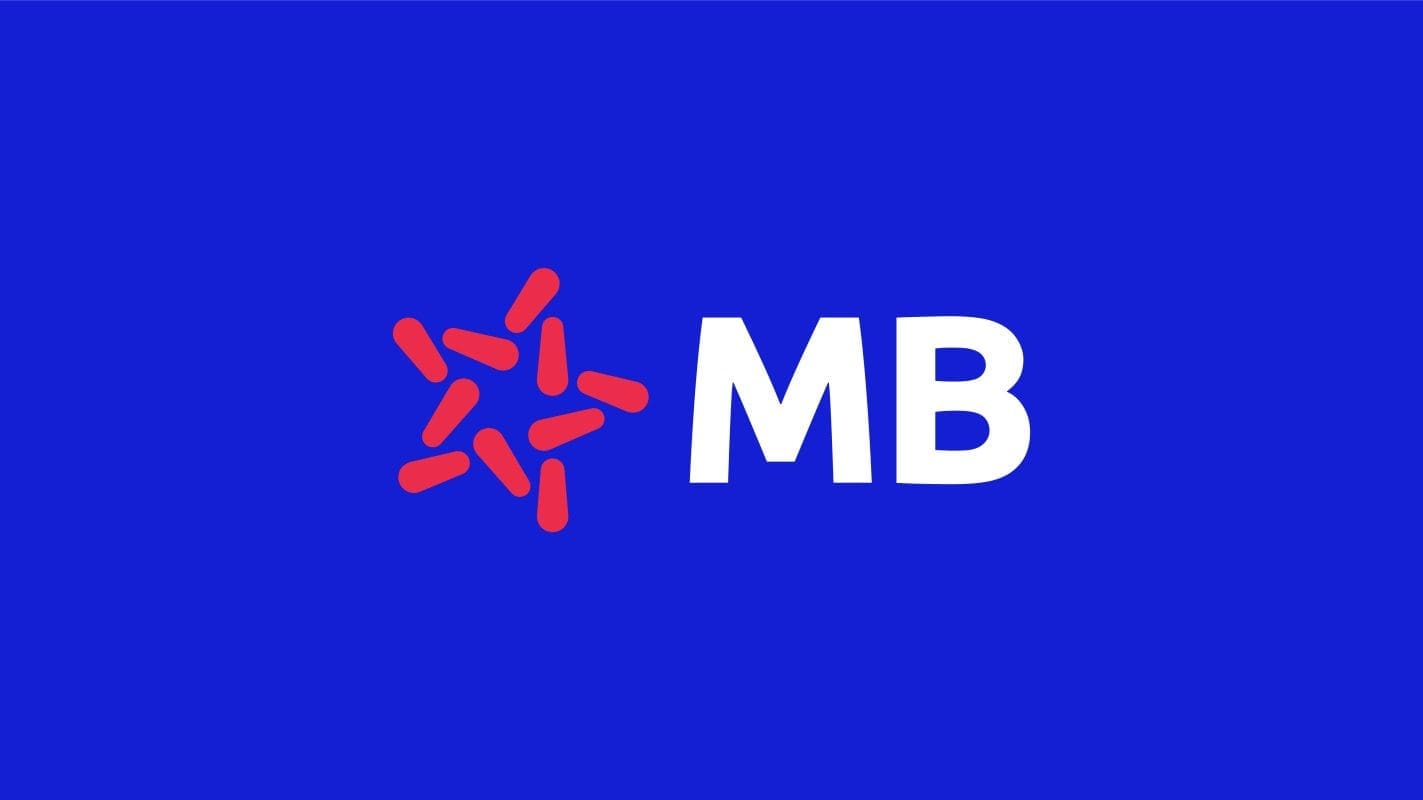
Following an internal rollout to inspire and educate employees, the MB Bank rebrand was then officially launched to the public on the day of MB’s 25th anniversary, marking the next chapter of their growth on their journey towards transformation.
MB Bank was awarded ‘Most Improved Bank of the Year’ for its refreshed brand platform along with two other awards at The Asian Banker Vietnam Awards 2020 .
Our work with MB Bank was awarded gold at the 2020 Transform Awards Asia for “Best Brand Development Project to Reflect a Change of Mission/Values/Positioning”.

“We are delighted to have a trusted strategic partner in Prophet and they have played a crucial role in our very important transformation journey as we evolve towards becoming a digital-first bank.”
Mr. Thai CEO, MB Bank
increase in revenue in 2021
increase in ROE in 2021
newly acquired customers in 2021 and 2022

Related Case Studies
A market leader generates new demand in a fast-changing retail landscape, refreshing eat. learn. play’s compelling brand to elevate their mission , elevating the story of an organization on the ground with the global lgbtqi+ community .
Thank you for subscribing.
Please check your email and click on the link to confirm your subscription.
Join our mailing list
Sign up and receive our latest thinking, insights and strategies to help your business grow better.
Your network connection is offline.

Brand Audit Case Study

Challenge: Branding a Brand-New Organization
Developing a brand for an established organization that’s been around for years is a straightforward process. But how do you define a brand for a client who is in the early stages of their corporate history? That’s what Triad Business Bank asked us. Here’s how we did it:
Establish Goals
Who are we and what do we stand for?
Who are we for (and not for)?
What are we trying to accomplish?
Research & Analysis
In order to get a comprehensive understanding of Triad Business Bank, we conducted qualitative research in the form of 19 interviews with key stakeholders. To gain the internal perspective of their brand, we interviewed 13 TBB employees at multiple levels within the organization. On the opposite end of the spectrum, we spoke with people outside of the bank to see the brand through an external lens, including current clients as well as one lost customer.
Competitive Analysis
We also evaluated TBB’s main competitors in hopes of learning what differentiates them from the other banks in the area.

Develop Brand Story & Visual Expression
Based on the data gathered during the initial stages of the Triad Business Bank brand development project, we determined the strengths, weaknesses, opportunities, and threats for their organization. This SWOT analysis guided us as we approached the creative side of this project.
SWOT ANALYSIS

The Results
Extend new brand to materials
Success for a branding initiative of this nature can be measured by the alignment of the creative materials developed with the organizational mission and culture. The data cultivated from our research emphasizes that Triad Business Bank is a community-focused organization that is trustworthy, approachable, and responsive. Taking this into consideration, we created visual elements and a website that reflected their values.

Case Studies

GlenGuard Frontlines
June 8, 2022

Greensboro Science Center 2021 Winter Wonderlights
June 1, 2022

TFF Architects Website
March 22, 2022

Triad Business Bank Brand Audit
March 9, 2022

Davie County Health and Human Services
January 22, 2021

UNC Greensboro Transform Magazine
October 14, 2020

The Sage Mule
April 1, 2020

McDonald’s Buy 1 Share 1 Program PR Campaign
January 3, 2020

Cumberland County School Rebrand

PART: Business 40 Closure PR Campaign

McDonald’s Hearts of Gold
February 27, 2019

Get Back UP Today Video Campaign
January 25, 2019

Veeder-Root: Corrosion Campaign
January 21, 2019

CRH: The Madison
January 16, 2019

General Espresso Equipment Company

Gilbarco | Veeder-Root RFTC 2018
January 15, 2019

Ruff Housing
January 14, 2019

Greensboro-High Point
January 11, 2019

L3 Mobile Vision
January 10, 2019

Downtown Burlington

October 26, 2018

September 4, 2018

Greensboro Science Center
August 30, 2018

Pinehurst CVB Campaign
July 26, 2018

High Point Police Department
March 29, 2018

Guilford Parent Academy
August 29, 2017

Rockingham County, NC
December 5, 2016

Ostomysecrets

National Folk Festival
November 21, 2016

Dan River State Crossings

Allard Get Back Up
November 18, 2016

November 17, 2016

Coming Soon…
July 16, 2016
Pin It on Pinterest
Managing a customer-experience transformation in banking
Regulation. Fickle customer loyalties. Nontraditional competitors. As if a decade of razor-thin margins and reputation issues weren’t enough, the mix of challenges facing global banks makes it easy to see why so many now voice a commitment to improved customer experience as a legitimate differentiator in an increasingly competitive environment. Of the 50 largest global banks, three out of four now pledge themselves to some form of customer-experience transformation. 1 Analysis of the 50 largest global banks’ annual reports and investor presentations for the latest financial year; based on the S&P Global Market Intelligence list of banks by total assets.
Stay current on your favorite topics
The benefits of such a strategy have been increasingly clear for some time across sectors and geographies. As practitioners like Amazon and Apple have demonstrated, real value resides not only in the products and services a company provides but also in the way that it delivers them. A seamless customer experience can be worth at least as much as a superior product or efficient process—building customer loyalty, reducing costs, making employees happier, and boosting revenues significantly. One bank that undertook a customer-experience transformation concluded that the lifetime profitability of a satisfied customer willing to actively recommend the bank to his or her friends was five to eight times greater than one who had a negative perception.
Many leading banks are pouring tremendous resources into transforming the customer experience , often with mixed results. This is understandable. A customer’s banking relationship includes key journeys that range from onboarding and transacting to maintenance and problem resolution. Effective transformations must not only recognize the complexity of these relationships but must also make a priority of the parts of the experience that matter most—in order to manage the cross-functional, end-to-end nature of customer needs rather than deferring to existing organizational structures.
Depending on a bank’s customer-experience goals, transformations can vary in regard to the time and resources required. In our experience, a handful of elements are necessary to execute any program that will deliver durable impact. These include, among other things, a consistent focus on value , ensuring the customer’s central role in any transformation, and the ability to scale a program. This article explores the ways that some banks have implemented these and other critical steps in constructing successful customer-experience transformations.

Remaking banking customer experience in response to coronavirus
Failure modes.
Customers are central to a wave of new opportunities and challenges facing banking executives, with regulators increasingly expecting banks to deliver on more than just credit-risk management and associated capital requirements. For example, regulators around the world increasingly examine customer complaints for examples of problematic sales practices and inadequate customer service. For the biggest banks, how they treat their customers is becoming more of a political issue, as any CEO who has been called before a congressional or parliamentary inquiry can attest.
Customers’ loyalty is also at risk. Banks face an expanding array of new competitors. The entry of companies like Alipay, Amazon Cash, Facebook Messenger P2P, WeChat, and other services skilled at customer ease and experience may, in the longer term, disintermediate traditional banks from customer relationships and reduce banks’ distribution margins. Another consequence is that players outside the traditional financial-services industry are starting to set the benchmarks for customer experience in banking. Internet retailers and other e-commerce players typically sit atop customer-satisfaction rankings. Banks often lumber in the middle of the pack.
As banks pour more effort into improving experience, we find three missteps to be the most likely culprits when efforts fall short of the mark. First, many banks ignore the need to achieve early, quick wins to demonstrate value and build momentum for change. Teams eager to achieve dramatic impact set out to create moments of customer delight and fix pain points across all journeys or processes at the same time and are often overwhelmed by the complexity and costs of redesign.
For example, one bank moved to fix its full mortgage journey in a single, focused effort. Despite a large investment of time and money, however, its gold-plated solution proved too complex to implement all at once. Early impact never materialized. As payback deadlines loomed, the team couldn’t deliver convincingly on redesigning complex systems, processes, or risk policies. Senior management balked at committing additional time and energy. The transformation never got off the ground and was ultimately abandoned.
Ironically, another way that customer-experience transformation efforts go awry is by leaving the customer out of a front-and-center focus in propelling a change effort. Despite the growing awareness of the value in superior customer experience, efforts to improve it are rarely held to the same rigor as an effort behind, say, a traditional productivity transformation. The customer’s voice is often left silent as change agents latch onto digitization to leapfrog competitors , self-service improvements, and revamped staffing models.
One payments player sought to improve its process of resolving customer disputes. It was considering a complete reworking of its technology to reduce processing time. However, after collecting customer feedback and conducting additional customer interviews, the company learned that the major pain point was not processing time but the lack of status updates customers received. By better understanding what was disturbing customers, the company was able to solve the problem with much less effort and with a greater likelihood of improving the experience.
Would you like to learn more about our Financial Services Practice ?
Finally, banks often fail to set up transformation programs with scaling in mind. In complex organizations it is easy for change efforts to get stuck in the depths of business silos, even when the objective is to create a cross-functional platform for tracking customer preferences and improving outcomes. Efforts that don’t give customer experience the same top-team and board attention as large-scale productivity-improvement efforts, and that don’t devote the same resources to oversight and measurement, risk lapsing into cursory efforts marked by meaningless bulletin-board slogans such as “customer experience is everyone’s job.”
Toward a durable transformation program
In our experience we’ve found banks increasingly finding success with “at scale” transformation efforts. These efforts define the bank as a series of customer journeys that can be reimagined and applied across functions and the organization as a whole. As value is demonstrated, larger and larger parts of the organization are included . In the early stages, such transformations take advantage of cross-functional teams that work within existing roles and in parallel with reporting structures. Over time, by emphasizing this type of agile collaboration, organizational structures can be revamped to deliver the new experiences sustainably over multiple years. The result is a transformation that delivers early impact and momentum and an opportunity to evolve as needs change, without the disruptive shock of tearing up an operating model in the fragile, early stages.
Every customer-experience transformation following such a model relies on certain prerequisites (Exhibit 1). These begin with a top-down, unwavering C-suite commitment to the program and to modeling the customer-experience behaviors that the organization espouses. They also include commitment to a bottom-up feedback loop to measure progress and involve employees in implementing and refining improvements. At the center of such efforts lies a dedication to a customer’s end-to-end experience with his or her bank—that is, the whole journey rather than individual, transactional touchpoints in the relationship. In turning that commitment into a successful business strategy for banks, we find five elements critical to implementing a superior customer-journey and experience transformation at scale.
Hard wire customer experience to value
The financial benefits of improving customer experience are clear. One bank found that customers willing to promote the bank were four times more likely than neutral customers to add additional products. These customers also typically see the bank as their main financial institution—a key driver of overall lifetime revenue. Many customer-experience programs are launched off the back of analyses such as this. However, few of these programs home in on where the value comes from. In addition, many do not hold themselves accountable to deliver greater profitability. Without a quantified link to value and a sound business case , transformation efforts can’t show early gains, build momentum among functional executives, or earn a seat at the executive team’s table.
To that end, we find it useful for banks to apply the same rigor of value attribution to customer experience as they do for productivity programs. One US payments company, for example, used fine-grained customer feedback, coupled with advanced analytics , to identify customer pain points that were driving problem calls to its call center. Managers selected the five customer journeys that drove about 20 percent of calls and redesigned them with the aim of eliminating all the calls. During implementation, the team realized that it had a broader opportunity for improving the vast majority of its customer-service interactions over a period of several years.
Stay agile to ensure scalability
While the overall transformation needs to be broken up into manageable work efforts, setting up for scale should be the goal from the first day. Too often, retail banks build oversize, bespoke teams and processes to address individual customer journeys with inadequate ways of collaborating across functions and measuring progress.
One global bank sought to take customer satisfaction to a higher level to break away from the competition. Managers set out to systematically reengineer key steps along customer journeys but found they were inhibited by the lack of a common language to define those journeys. Executives on the marketing side thought about life events, while product owners viewed the customer experience through the lens of purchasing products. Without a common language, the bank struggled to approach customer-experience transformation in a uniform way across functions, handcuffing efforts to collect the right facts to jointly identify and resolve pain points.
A breakthrough came when the team was able to collaboratively define a simple and pragmatic taxonomy arranged by products and across steps in the key banking customer journeys (Exhibit 2). The common language achieved could then be used to broaden the customer-experience transformation across multiple parts of the organization.
The next step was to then systematically redesign and reengineer the customer journeys at scale. In order to provide senior management with a consistent way of discussing the status of journey redesign, bank managers set out to define a common “maturity” model that could be applied across all journeys.
The maturity model addressed four key gates to pass through on the way to customer-experience improvement (Exhibit 3). The work at level one was to establish a fact base behind prioritized customer journeys, for example, understanding what truly drives customer experience and satisfaction in securing a home loan.
At the next level, the team defined an overall target for improving the journey and established an “agile studio” to stimulate solution ideas and execute improvements. Such sprints took place over periods of two to four weeks. At the third level, the team mapped pain points to the underlying elements for each critical step in the journey and their importance to overall customer experience. In this case, the real issue for customers was how the bank delivered the conversation about loan pricing. Against this deeper understanding of the sources of customer experience, the team was then able to put in place an iterative process of developing and testing rapid prototypes of minimum viable products and refining knowledge with each new application.
The end result: a set of actions that encouraged earlier, better conversations with the customer on price. Throughout the process, the team also continuously tracked impact via customer and employee feedback. Over a period of nine months, the bank registered a 15-point improvement in customer satisfaction for its home-loan journey, from a score of negative five to ten. 2 On a scale ranging from negative 100 to 100.
This bank’s story is not unique. Banks struggle to pursue customer-experience transformation amid the complexities of running their day-to-day business. But by combining a common taxonomy with a structured maturity model, it is possible to quickly identify customer pain points and to create minimum viable products. Agile, iterative testing then allows a team to test new approaches, learn from failure, and refine and start over again at a high metabolic rate. This approach can produce value early and provide the successes to build momentum and secure ongoing support from the organization.
Don’t forget the customer
Even banks that have thoughtfully created a flexible, iterative improvement process at times inadvertently overlook the most critical stakeholder: the customer. In the rush to digitally enable customer journeys and transform the customer experience, it’s easy to be swept away by a bias for technological solutions. But key customers can easily become skeptical about not having a human representative to call when things go wrong. The right balance requires study, but when interactions are new or particularly complex, the personal touch is still an important differentiator of customer service. Without an explicit link to and inclusion of the customer, no transformation will ever be fully right.

Customer Experience
Similarly, gathering and segmenting data are classic starting points in understanding customers. But data by themselves are insufficient. The most successful customer-experience efforts apply a human filter to collected information to address key questions about the motivations and wishes of customers. Some of the successful transformations we’ve observed have included customers in their design via a variety of techniques: structured interviews, customer panels, zero-based-design workshops, and executives spending time in call centers and branches to experience firsthand what customers encounter and to shape customer-centric responses.
Continuously push for more value
Improving customer journeys is not a linear process. Often the first round of initiatives will not deliver the desired satisfaction levels. Moving from good improvement to great will require regularly going back to the drawing board and maintaining patience and a mind-set of always pushing for more in the interest of customers. One European bank established a rhythm of regularly recurring customer-journey improvements. At the beginning of its customer-experience transformation, it identified and redesigned each of its most important journeys. Since then, it has reconvened its cross-functional customer-experience teams in regular intervals of 12 to 36 months, depending on the importance of the journey under review. In these “hot periods,” lasting several weeks, the teams react to all customer feedback that requires structural adjustments that are larger than can be handled alongside day-to-day operations. Concentrating this work effort in a cross-functional team is an effective way for the bank to regularly optimize journeys.
Such a continuous-improvement regimen can help foster a superior customer-experience mind-set. One way is at the front line, with employees closing the loop with customers on direct feedback, then using those insights to change the way the process is designed. A second benefit accrues from continuously improving service design. Product companies understand better than banks and other service organizations that using customer insights is a way to develop a superior product. But banks have rarely invested the same way in service design. Creating a pipeline of feedback and actions, rather than simply reporting metrics, is one way to ensure that the customer’s voice is always present in any transformation effort.
Establish a cross-functional team with C-suite backing
Transforming customer experience in a bank requires bringing stakeholders from distribution, product, risk, legal, pricing, and other departments to the table. Regular risks include potentially conflicting agendas or timelines. Resolving these barriers requires active sponsorship from the top.
Leaders in customer experience pursue a number of approaches to overcome this kind of complexity. One way is to set up a dedicated customer-experience organization within the bank. Dedicated teams encourage a continuous focus on customer experience across product, service, and geographical silos. In contrast, trying to fit customer-experience team members seamlessly into the existing organization can wind up emphasizing narrow customer touchpoints, which reduces effectiveness. In all cases, the CEO must make customer experience a priority, and in some cases the appointment of a chief customer officer can serve to underline that commitment.
The benefits of superior customer experience—bottom-line results and stronger customer and frontline-worker loyalty—are not lost on banks. By keeping a focus on the handful of elements central to successfully transforming customer journeys, banks can tap those benefits for durable competitive advantage.
Nicolas Maechler is a partner in McKinsey’s Paris office, Jonathan Michael is a partner in the Sydney office, Robert Schiff is a partner in the San Francisco office, and Thomas Rüdiger Smith is an associate partner in the Melbourne office.
Explore a career with us
Related articles.

The expanding role of design in creating an end-to-end customer experience

The CEO guide to customer experience

From touchpoints to journeys: Seeing the world as customers do
- philippines

Case study: BDO and Interbrand
- main#clickShareSocial">email
- main#clickShareSocial">telegram
- main#clickShareSocial">whatsapp
- main#clickShareSocial">wechat
- main#clickShareSocial">pinterest
- main#clickShareSocial">line
- main#clickShareSocial">snapchat
- main#clickShareSocial">reddit
The Background
BDO Unibank, Inc., commonly known as Banco de Oro or BDO, is a full-service universal bank in the Philippines. It provides a complete array of industry-leading products and services to individuals or small businesses, and large corporations and institutions.
In 2007, BDO merged with Equitable PCI Bank. As a result, BDO needed to establish a strategic brand framework to bring to life the business strategy post-merger and to align its culture with the combined bank’s vision.
“We were just coming off a merger of two big institutions with three distinct cultures and we were operating as an entity without a unified message, nor a common value proposition. We needed to unify our story under one brand proposition that is common and genuinely practiced across the whole Bank – one that is anchored on service, the genuine desire to help customers and the ability to think out of the box,” shared Nestor Tan, Director, President and Chief Executive Officer at BDO Unibank.
To achieve this, BDO worked with long time branding partner, Interbrand, to first establish a strong brand foundation and then to help the bank’s employees deliver the brand experience.
The Context/Challenge
Working with clients across the region, Interbrand has found that effective employee engagement that truly drives business performance is rare. Too often, efforts suffer from several fundamental yet addressable flaws: First, leaders throughout the organization do not own employee engagement efforts – they tend to fall under the guidance of human resources or communications divisions without strong leadership from the top. Secondly, these efforts approach the workforce as one homogeneous entity and fail to acknowledge the very different needs and motivations of employees throughout the organization. As a result, messages become diluted and fail to resonate with intended audiences.
Today, the conventional view of employee engagement is that it’s primarily an internal communications endeavor with the fairly limiting objectives of sharing business goals and explaining how job functions support these goals. Such initiatives do not link employee behavior to the desired customer experience and thus fail to create real impact to the business.
After developing the strategic brand proposition “We find ways”, Interbrand worked with BDO on a number of initiatives that focused on building a stronger employer brand through employee engagement. The objective of these initiatives was not only to compete more effectively for talent, but also to embody the ‘We find ways’ service proposition through the company’s culture.
The Solution
BDO’s branches are at the forefront of setting high standards as a sales and service-oriented, customer-focused force.
The customer experience is in many ways the sum total of what’s transpiring inside an organization, sometimes even indirectly. If there’s no alignment of internal behaviors, it seeps into the customer experience. Yet, if every individual in the business is aligned and working in harmony, then customers will experience that positive coherence every time they interact with the company. This brings about the very tangible benefits of more customers, greater loyalty, and premium pricing.
What was needed at BDO was a move away from simpler models of broadcasting in favor of a segmented, tailored approach that truly activated employees as agents of business growth – from understanding to action and from action to initiative.
“We recognized that sustaining the brand proposition was key, especially with the turnovers, and the growth and expansion of the business across markets and geographic location. We focused on the customer experiences we wanted to nurture and then worked with Interbrand to highlight the behaviors that brought BDO’s brand proposition to life,” added Tan.
The following practices have been key to delivering BDO’s employee engagement effectively:
- This was an initiative endorsed and led by BDO’s President and senior leadership. While employee engagement efforts may start from the bottom up or within one division, true organizational impact ultimately requires the support of top leadership.
- Segmenting the workforce similar to segmenting customers – it’s important to work not only with HR, but also key business and functional heads to understand the different needs of diverse employee groups. An individual working as a bank teller in the provinces will have different motivations than that of a senior banker working in head office.
- Move beyond internal communications – emphasize how to live the brand through actionable behaviors and link these actions to desired customer experiences.
- Help internal staff understand the role they play on the outside. Many back-office function employees don't understand or even realize the vital role they play in delivering and influencing the customer experience.
- It’s important to generate a sense of momentum and energy. An effective tactic is to pilot programs that quickly demonstrate the positive business impact of engagement.
- Create scalable solutions that can easily be accessed and delivered through digital channels. For BDO, Interbrand created an internal socialization tool that allowed staff at all levels and all locations to search and share exemplary ‘We find ways’ success stories.
Business Results
Today, BDO maintains a strong Number 1 or 2 market share position in almost every major product category of significance. It has become the overwhelming image leader in terms of defined brand attributes, critical awareness and patronage - surpassing its nearest competitors within three years of establishing its brand proposition.
Annual usage, attitude and image studies since 2010 show that customer experience in the branch network has been a major driver of BDO’s image, along with the advertising. Since the beginning, the BDO customer promise has been consistent and unchanged as "We find ways" – and supported by its customer service philosophy. This commitment is reflected in BDO’s customer tracking scores over the past 5 years, in which the bank’s main index score exceeds both regional and global standards. Additionally, among local multi-banking customers, the tracking likewise shows BDO’s significant advantage over its nearest competitors.
“Interbrand helped us with a program to instill behaviors in our staff that bring our brand proposition to life. More than a cultural aspiration, our employees genuinely practice ‘We find ways’ to help our customers. They’re engaged and are proud to work for BDO, always going the extra mile to ensure that customers receive the best overall banking experience, and deliver better results for all stakeholders,” concludes Tan.
Free newsletter
Get the daily lowdown on asia's top marketing stories..
We break down the big and messy topics of the day so you're updated on the most important developments in Asia's marketing development – for free.
- SUGGESTED TOPICS
- The Magazine
- Newsletters
- Managing Yourself
- Managing Teams
- Work-life Balance
- The Big Idea
- Data & Visuals
- Reading Lists
- Case Selections
- HBR Learning
- Topic Feeds
- Account Settings
- Email Preferences
Case Study: How Aggressively Should a Bank Pursue AI?
- Thomas H. Davenport
- George Westerman

A Malaysia-based CEO weighs the risks and potential benefits of turning a traditional bank into an AI-first institution.
Siti Rahman, the CEO of Malaysia-based NVF Bank, faces a pivotal decision. Her head of AI innovation, a recent recruit from Google, has a bold plan. It requires a substantial investment but aims to transform the traditional bank into an AI-first institution, substantially reducing head count and the number of branches. The bank’s CFO worries they are chasing the next hype cycle and cautions against valuing efficiency above all else. Siti must weigh the bank’s mixed history with AI, the resistance to losing the human touch in banking services, and the risks of falling behind in technology against the need for a prudent, incremental approach to innovation.
Two experts offer advice: Noemie Ellezam-Danielo, the chief digital and AI strategy at Société Générale, and Sastry Durvasula, the chief information and client services officer at TIAA.
Siti Rahman, the CEO of Malaysia-headquartered NVF Bank, hurried through the corridors of the university’s computer engineering department. She had directed her driver to the wrong building—thinking of her usual talent-recruitment appearances in the finance department—and now she was running late. As she approached the room, she could hear her head of AI innovation, Michael Lim, who had joined NVF from Google 18 months earlier, breaking the ice with the students. “You know, NVF used to stand for Never Very Fast,” he said to a few giggles. “But the bank is crawling into the 21st century.”
- Thomas H. Davenport is the President’s Distinguished Professor of Information Technology and Management at Babson College, a visiting scholar at the MIT Initiative on the Digital Economy, and a senior adviser to Deloitte’s AI practice. He is a coauthor of All-in on AI: How Smart Companies Win Big with Artificial Intelligence (Harvard Business Review Press, 2023).
- George Westerman is a senior lecturer at MIT Sloan School of Management and a coauthor of Leading Digital (HBR Press, 2014).
Partner Center
- Stock Compare
- Superstar Portfolio
- Stock Buckets
- Corporate Actions
- Nifty Heatmap
- *Now Available in Hindi

HDFC Bank Case Study 2021 – Industry, SWOT, Financials & Shareholding
by Jitendra Singh | Mar 4, 2021 | Case Study , Stocks | 1 comment

HDFC Bank Case Study and analysis 2021: In this article, we will look into the fundamentals of HDFC Bank, focusing on both qualitative and quantitative aspects. Here, we will perform the SWOT Analysis of HDFC Bank, Michael Porter’s 5 Force Analysis, followed by looking into HDFC Bank’s key financials. We hope you will find the HDFC Bank case study helpful.
Disclaimer: This article is only for informational purposes and should not be considered any kind of advisory/advice. Please perform your independent analysis before investing in stocks, or take the help of your investment advisor. The data is collected from Trade Brains Portal .
Table of Contents
About HDFC Bank and its Business Model
Incorporated in 1994, HDFC Bank is one of the earliest private sector banks to get approval from RBI in this segment. HDFC Bank has a pan India presence with over 5400+ banking outlets in 2800+ cities, having a wide base of more than 56 million customers and all its branches interlinked on an online real-time basis.
HDFC Limited is the promoter of the company, which was established in 1977. HDFC Bank came up with its 50 crore-IPO in March 1996, receiving 55 times subscription. Currently, HDFC Bank is the largest bank in India in terms of market capitalization (Nearly Rs 8.8 Lac Cr.). HDFC Securities and HDB Financial Services are the subsidiary companies of the bank.

HDFC Bank primarily provides the following services:
- Retail Banking (Loan Products, Deposits, Insurance, Cards, Demat services, etc.)
- Wholesale Banking (Commercial Banking. Investment Banking, etc.)
- Treasury (Forex, Debt Securities, Asset Liability Management)
HDFC Bank Case Study – Industry Analysis
There are 12 PSU banks, 22 Private sector banks, 1485 urban cooperative banks, 56 regional rural banks, 46 foreign banks and 96,000 rural cooperative banks in India. The total number of ATMs in India has constantly seen a rise and there are 209,110 ATMs in India as of August 2020, which are expected to further grow to 407,000 by the end of 2021.
In the last four years, bank credit recorded a growth of 3.57% CAGR, surging to $1698.97 billion as of FY20. At the same time, deposits rose with a CAGR of 13.93% reaching $1.93trillion by FY20. However, the growth in total deposits to GDB has fallen to 7.9% in FY20 owing to pandemic crises, which was above 9% before it.
Due to strong economic activity and growth, rising salaries, and easier access to credit, the credit demand has surged resulting in the Credit to GDP ratio advancing to 56%. However, it is still far less than the developed economies of the world. Even in China, it is revolving around 150 to 200%.
As of FY20, India’s Retail lending to GDP ratio is 18% , whereas in developed economies (US, UK) it varies between 70% – 80%).
Michael Porter’s 5 Force Analysis of HDFC Bank
1. rivalry amongst competitors.
- The banking sector has evolved very rapidly in the past few years with technology coming in, and now it is not only limited to depositing and lending but various categories of loans and advances, digital services, insurance schemes, cards, broking services, etc.; hence, the banks face stiff competition from its rivals.
2. A Threat by Substitutes
- For services like mutual funds, investments, insurances, categorized loans, etc., banks are not the only option these days because a lot of niche players have put their foot in the specialized category, surging the threat by substitutes for the banks.
- Another threat for the traditional banks is NEO Banks. The Neo Banks are virtual banks that operate online, are completely digital, and have a minimum physical presence.
3. Barriers to Entry
- Banks run in a highly regulated sector. Strict regulatory norms, huge initial capital requirements and winning the trust of people make it very tough for new players to come out as a national level bank in India. However, if a company enters as a niche player, there are relatively fewer entry barriers.
- With RBI approving the functioning of new small finance banks, payment banks and entry of foreign banks, the competition has further intensified in the Indian banking sector.
4. Bargaining Power of Suppliers
- The only supply which banks need is capital and they have four sources for the capital supply viz. deposits from customers, mortgage securities, loans, and loans from financial institutions. Customer deposits enjoy higher bargaining power as it is totally dependent on income and availability of options.
- Financial Institutions need to hedge inflation, and banks are liable to the rules and regulations of the RBI which makes them a safer bet; hence, they have less bargaining power.
5. Bargaining Power of Customers
- In modern days, customers not only expect proper banking but also the quality and faster services. With the advent of digitalization and the entry of new private banks and foreign banks, the bargaining power of customers has increased a lot.
- In terms of lending, creditworthy borrowers enjoy a high level of bargaining power as there is a large availability of banks and NBFCs which are ready to offer attractive loans and services at low switching and other costs.
HDFC Bank Case Study – SWOT Analysis
Now, moving forward in our HDFC Bank case study, we will perform the SWOT analysis.
1. Strengths
- Currently, HDFC Bank is the leader in the retail loan segment (personal, car and home loans) and credit card business, increasing its market share each year
- The HDFC tag has become a sign of trust in the people as HDFC has come out as a pioneer not only in banking, but loans, insurances, mutual funds, AMC and brokerage.
- HDFC Bank has always been an institution of its words as it has, without fail, delivered its guidance and this has created a strong brand loyalty in the market for them.
- HDFC Bank has very well leveraged the technology to help its profitability, only 34% transaction via Internet Banking in 2010 to 95% transaction in 2020.
2. Weaknesses
- HDFC bank doesn’t have a significant rural presence as compared to its peers. Since its inception, it has focused mainly on high-end clients. However, the focus is shifting in the recent period as nearly 50% of its branches are now in semi-urban and rural areas.
3. Opportunities
- The average age of the Indian population is around 28 years and more than 65% of the population is below 35, with increasing disposable income and rising urbanization, the demand for retail loans is expected to increase. HDFC Bank, being a leader in retail lending, can make the best out of this opportunity.
- With modernization in farming and a rise in rural and semi-urban disposable income, consumer spending is expected to rise. HDFC Bank can increase its market share in these segments by grabbing this opportunity. Currently, the bank has only 21% of the branches in rural areas.
- A lot of niche players have set up their strong branches in respective segments, which has shown stiff competition and has shrined the market share and profit margin for the company. Example – Gold Loans, Mutual Funds , Brokerage, etc.
- In-Vehicle Financing (which is HDFC Bank’s major source of lending income), most of the leading vehicle companies are providing the same service, which is a threat to the bank’s business.
Asian Paints Case Study 2021 – Industry, SWOT, Financials & Shareholding
HDFC Bank’s Management
HDFC Bank has set high standards in corporate governance since its inception.
Right from sticking to their words to proper book writing, HDFC has never compromised with the banking standards, and all the credit goes to Mr. Aditya Puri, the man behind HDFC Bank, who took the bank to such great heights that today its market capitalization is more than that of Goldman Sachs and Morgan Stanley of the US.
In 2020, after 26 years of service, he retired from his position in the bank and passed on the baton of Managing Director to Mr. Shasidhar Jagadishan. He joined the bank as a Manager in the finance function in 1996 and with an experience of over 29 years in banking, Jagadishan has led various segments of the sector in the past.
Financial Analysis of HDFC Bank
- 48% of the total revenue for HDFC bank comes from Retail Banking, followed by Wholesale Banking (27%), Treasury (12%), and 13% of the total comes from other sources.
- Industries receive a maximum share of loans issued by HDFC bank, which is 31.7%, followed by Personal Loans and Services both at a 28.7% share of the total. Only 10.9% of the total loans are issued to Agricultural and allied activities.
- HDFC Bank has a 31.3% market share in credit card transactions, showing a growth of 0.23% from the previous fiscal year, which makes it the market leader, followed by SBI.
- HDFC Bank is the market leader in large corporate Banking and Mid-Size Corporate Banking with 75% and 60% share respectively.
- In Mobile Banking Transaction, the market share of HDFC bank is 11.8%, which has seen a degrowth of 0.66% in the current fiscal year.
- With each year, HDFC Bank has shown increasing net profit, which makes the 1-year profit growth (24.57%) greater than both 3-year CAGR (21.75%) and 5-year CAGR (20.78%).
- Capital Adequacy Ratio, which is a very important figure for any bank stands at 18.52% for HDFC Bank.
- As of Sept 2020 HDFC, is at the second position in bank advances with a 10.1% market share, which has shown a rise from 9.25% a year ago. SBI tops this list with a 22.8% market share, Bank of Baroda is at the third spot with a 6.68% share, followed by Kotak Mahindra Bank (6.35%).
- HDFC Bank is again at the second spot in the market share of Bank deposits with 8.6%. SBI leads with a nearly 24.57% market share. PNB holds 7.5% of the market share in this category, coming out as the third followed by Bank of Baroda with 6.89%.
HDFC Bank Financial Ratios
1. profitability ratios.
- As of FY20, the net profit margin for the bank stands at 22.87%, which has seen a continuous rise for the last 4 fiscal years. This a very positive sign for the bank’s profitability.
- The Net Interest Margin (NIM) has been fluctuating from the range of 3.85% to 4.05% in the last 5 fiscal years. Currently, it stands at 3.82% as of FY20.
- Since FY16, there has been a constant fall in RoE, right from the high of 18.26% to 16.4% as of FY20.
- RoA has been more or less constant for the company, currently at 1.89%, which is a very positive sign.
2. Operational Ratios
- Gross NPA for the bank has fallen from FY19 (1.36) to 1.26, which a positive sign for the company. A similar improvement is also visible in the Net NPA, currently standing at 0.36.
- The CASA ratio for the bank is 42.23%, which has been seeing a continuous fall since FY17 (48.03%). However, there has been a spike rise in FY17 as in FY16, it was 43.25 and in FY18, again came to the almost same level of 43.5.
- In FY19, Advance Growth witnessed a massive spike from 18.71 level in FY18 rising to 24.47%. However, in FY20, it again fell nearly 4 points, coming down to 21.27%.
HDFC Bank Case Study – Shareholding Pattern
- Promoters hold 26% shares in the bank, which has been almost at the same level for the last many quarters. In the December quarter a years ago, the promoter holding was 26.18%. The marginal fall is only due to Aditya Puri retiring and selling few shares for his post-retirement finance, which he stated.
- FIIs own 39.95% shareholding in the bank, which has been increasing for years in every quarter. HDFC bank has been a darling share in the investor community.
- 21.70% of shares are owned by DIIs as of December Quarter 2020. Although it is less than the SeptQ2020(22.90%), it is still far above the year-ago quarter (21.07).
- Public holding in HDFC bank is 12.95% as of Dec Q2020, which has tanked from the year-ago quarter (14.83%) as FIIs increasing their share, which is evident from the rising share prices.
Closing Thoughts
In this article, we tried to perform a quick HDFC Bank case study. Although there are still many other prospects to look into, however, this guide would have given you a basic idea about HDFC Bank.
What do you think about HDFC Bank fundamentals from the long-term investment point of view? Do let us know in the comment section below. Take care and happy investing!
Start Your Stock Market Journey Today!
Want to learn Stock Market trading and Investing? Make sure to check out exclusive Stock Market courses by FinGrad, the learning initiative by Trade Brains. You can enroll in FREE courses and webinars available on FinGrad today and get ahead in your trading career. Join now!!
Nice can I get full case
Submit a Comment Cancel reply
Your email address will not be published. Required fields are marked *
Search Topic or Keyword
Trending articles.

Recent IPO’s
- Bharti Hexacom IPO Review 2024 – GMP, Financials And More
- SRM Contractors IPO Review 2024 – GMP, Financials And More
- Krystal Integrated Services IPO Review 2024 – GMP, Financials & More
- Popular Vehicles IPO Review – GMP, Financials & More
- Gopal Namkeen IPO Review – Financials, GMP And More
Easiest Stock Screener Tool!
Best stock discovery tool with +130 filters, built for fundamental analysis. Profitability, Growth, Valuation, Liquidity, and many more filters. Search Stocks Industry-wise, Export Data For Offline Analysis, Customizable Filters.
- — Stock Screener
- — Compare Stocks
- — Stock Buckets
- — Portfolio Backtesting
Start your stock analysis journey with Trade Brains Portal today. Launch here !
Keep the Learning On!
Subscribe to Youtube to watch our latest stock market videos. Subscribe here .

IMAGES
VIDEO
COMMENTS
CASE STUDY. Minna Bank: Japan's first digital bank. ... Minna Bank has won the "Brand of the Year" award in the brand category of the Red Dot Design Award 2021, one of the world's three major design awards. They are the first Japanese company to win this award, and the first financial institution in the world to win it. ...
The good news is that there are valuable lessons you can glean from others who have already been down this road. These three financial services institutions partnered with BrandActive to maximize the value of their rebrand. Take a page from their rebrand implementation roadmaps to help you position your company for a successful rebranding journey.
Bank Merger and Brand Creation Case Study. Brought to you by Pannos Marketing. Published November 19, 2021. Read Now. Bridgewater Savings Bank and Mansfield Bank, two long-standing community institutions, were looking to develop a new name, brand and identity to successfully unite the two. Pannos immersed themselves in both institutions to ...
So, on this episode, we've got a case study in the process of rebranding from a company that just went through it: Cadence Bank. That's right—us! In 2021, Cadence Bank officially merged with BancorpSouth Bank, which necessitated a large-scale rebrand to develop a new, shared identity. But while it presented massive opportunity, the ...
Already California's 11th largest credit union, Redwood's membership has enjoyed healthy growth since rolling out the refreshed brand — up almost 6% in 2015, and growth was on pace for 7.5% through 2016. The credit union also saw loan volumes shoot up by 14% to $2.1 billion, and the forecast is for another 20% increase.
Established in 1918, UnionBank is one of the fastest-growing banks in the Philippines, ranking seventh in terms of assets under management. With only 200 branches, UnionBank had a comparatively small retail footprint. But they saw an opportunity to complement that real estate with technology to advance the digital transformation agenda.
U.S. Bank: A Case Study in Digital Banking Transformation Success Subscribe Now Get The Financial Brand's FREE Email Newsletter. By Jim Marous, Co-Publisher of The Financial Brand, CEO of the Digital Banking Report, and host of the Banking Transformed podcast « VIEW FULL LIST OF BANKING PODCASTS. FEATURING: Dominic Venturo, Senior Executive Vice President, Chief Digital Officer at U.S. Bank
Explore our digital brand case studies with examples in financial services, with branding, rebranding and digital case studies across wealth management, private banking, retail banking, investment banking and fintech. As a leading digital brand agency, our case studies span brand strategy, brand naming, rebranding and digital transformation ...
personal banking services they need to support and grow their operations. Serving business customers is a privilege and an opportunity—but only for financial institutions and their partners that understand the real needs of smaller, local businesses." - Mark Metcalf, SVP/Director of Sales & Service Center, BrandBank " BRANDBANK CASE STUDY
In this case study, we identify some of the innovations that are being made both by young start-ups and long-established banks. ... The Financial Brand—is the banking industry prepared for a world without bankers?). 1.6 Partnerships. Wherever banks are seeking to compete within the manufacture-to-distribution spectrum, they now need to ...
The aim of this paper is to show how a bank's brand value is quantitatively assessed using the Interbrand methodology, taking into account the specifics of the banking market. ... (2014), " Customer knowledge management, innovation capability and business performance: a case study of the banking industry ", Journal of Knowledge Management ...
8.3m. newly acquired customers in 2021 and 2022. Prophet developed a new brand platform that captured the essence of MB's transformation: to provide modern banking that enriches the future of people and businesses. In parallel, we also created a new logo and designed a comprehensive visual system together with key assets to bring the new ...
Company Profile. Headquartered in Mumbai, Axis Bank is the third largest private sector bank in India. It offers financial services to customer segments covering large and mid-sized corporates, MSME, agriculture and retail businesses. The Bank has a large footprint, with over 2,500 domestic branches spanning the length and breadth of the country.
Based on the data gathered during the initial stages of the Triad Business Bank brand development project, we determined the strengths, weaknesses, opportunities, and threats for their organization. ... Case Studies. GlenGuard Frontlines. June 8, 2022. Greensboro Science Center 2021 Winter Wonderlights. June 1, 2022. TFF Architects Website ...
The net worth of millennials (18-35) has decreased by 34% since 1996. 25% lower Household wealth for those ppl 20-35 in 2016 compared to 2007. 46% of millennials feel they aren't saving enough, and 39% say they believe they'll work past retirement. Millennials earn 20% less than parents did at their age.
Depending on a bank's customer-experience goals, transformations can vary in regard to the time and resources required. In our experience, a handful of elements are necessary to execute any program that will deliver durable impact. These include, among other things, a consistent focus on value, ensuring the customer's central role in any ...
Case study: BDO and Interbrand. The Background. BDO Unibank, Inc., commonly known as Banco de Oro or BDO, is a full-service universal bank in the Philippines. It provides a complete array of ...
1. Islamic Bank in Qatar: Creating Omni-Channel Experience 👏🏻 3.7K applause. Case study by Atishay Goyal. A team of 8 developers, 1 Business Analyst, and 1 UX designer was setup onsite in Qatar to execute the revamp of CB's digital presence and an Omni-Channel experience to its customers.
Case Study: Will a Bank's New Technology Help or Hurt Morale? by. Leonard A. Schlesinger. From the Magazine (July-August 2021) Anuj Shrestha. Share. Save. Beth Daniels, the CEO of Michigan's ...
4 FINASTRA Kotak Mahindra Bank Case study The solution. Kotak Mahindra Bank enlisted Finastra to design and deliver a brand-new enterprise banking portal. Forging a true partnership He adds: "One of the reasons this project was so successful was because Finastra
Siti Rahman, the CEO of Malaysia-based NVF Bank, faces a pivotal decision. Her head of AI innovation, a recent recruit from Google, has a bold plan. It requires a substantial investment but aims ...
Report. Customer Behavior and Loyalty in Banking: Global Edition 2023. At a Glance. Bain's latest global consumer survey finds widespread unbundling of banking services in all countries and among all age groups. It's most pronounced in developing markets, where lower-income consumers had long been underserved by banks and now find access ...
In the HDFC Bank case study, we have performed the SWOT Analysis, Porter's 5 Force Analysis and looked into key financials. Being the largest private bank.. ... delivered its guidance and this has created a strong brand loyalty in the market for them. HDFC Bank has very well leveraged the technology to help its profitability, only 34% ...
"I hope one day those kinds of mergers between big banks will be allowed and we can contribute to that by showing that it's possible," Sergio Ermotti said.